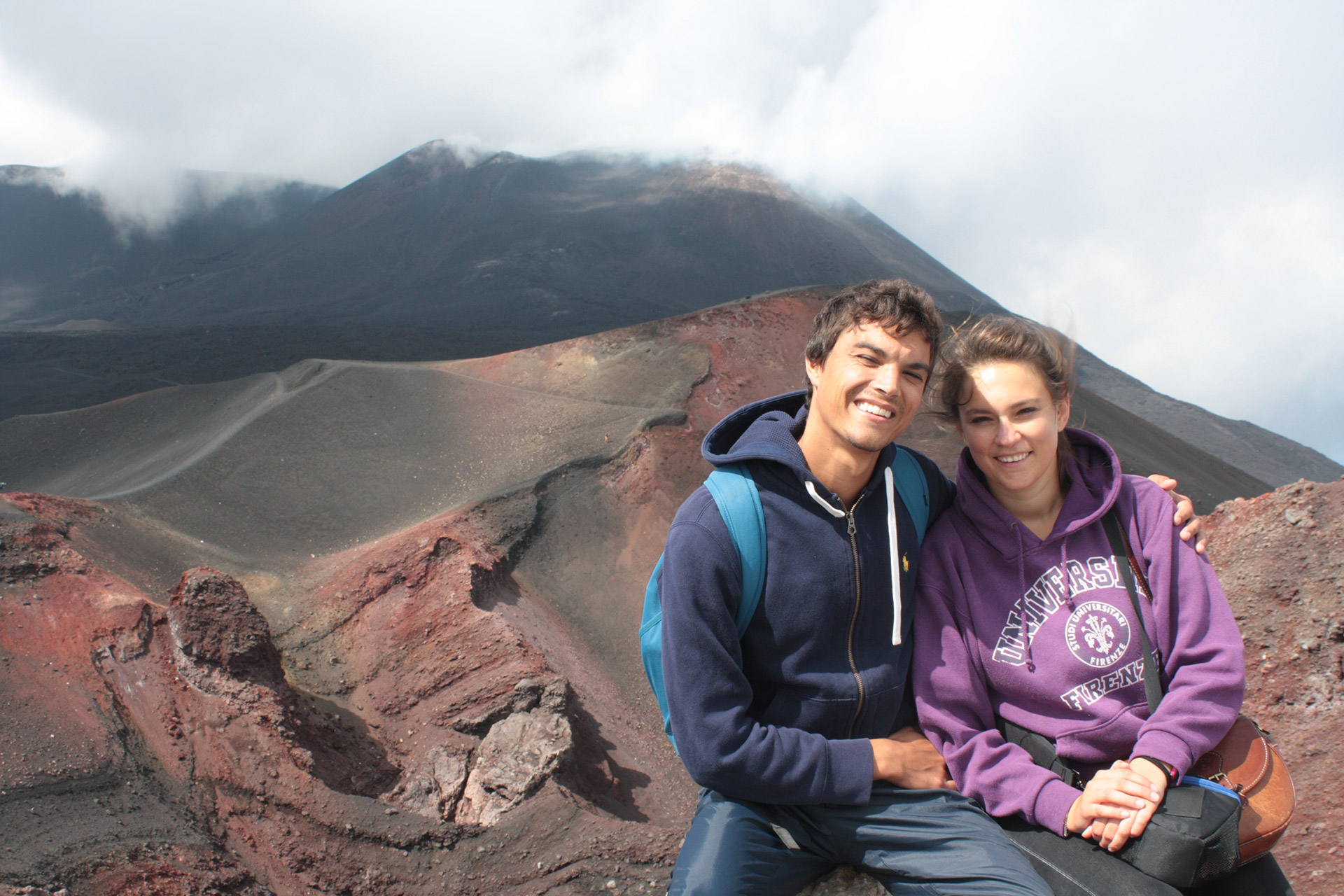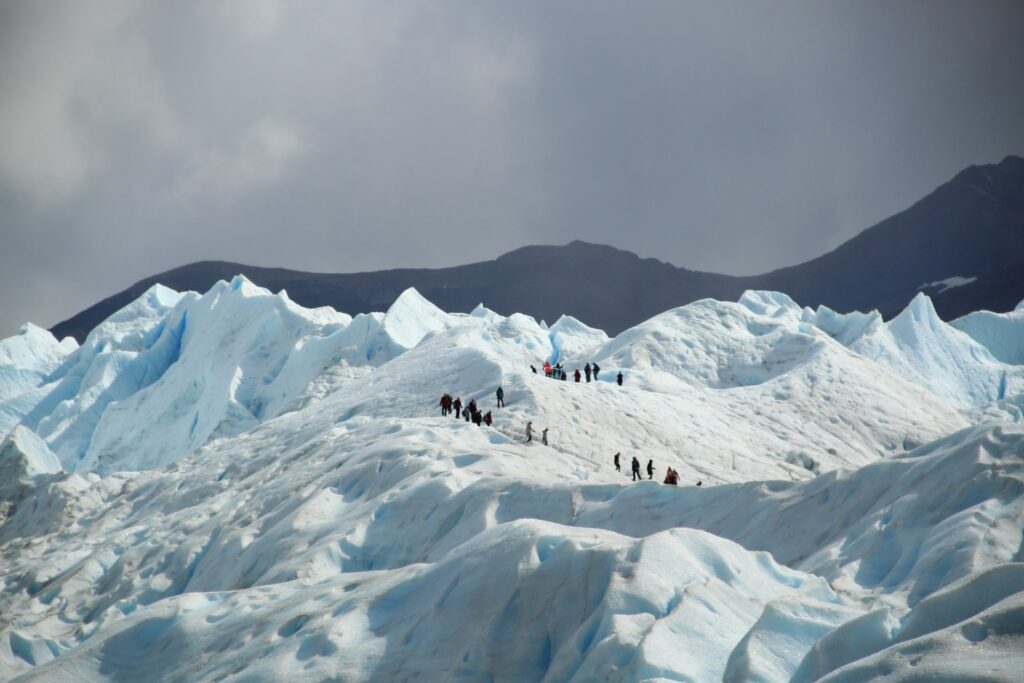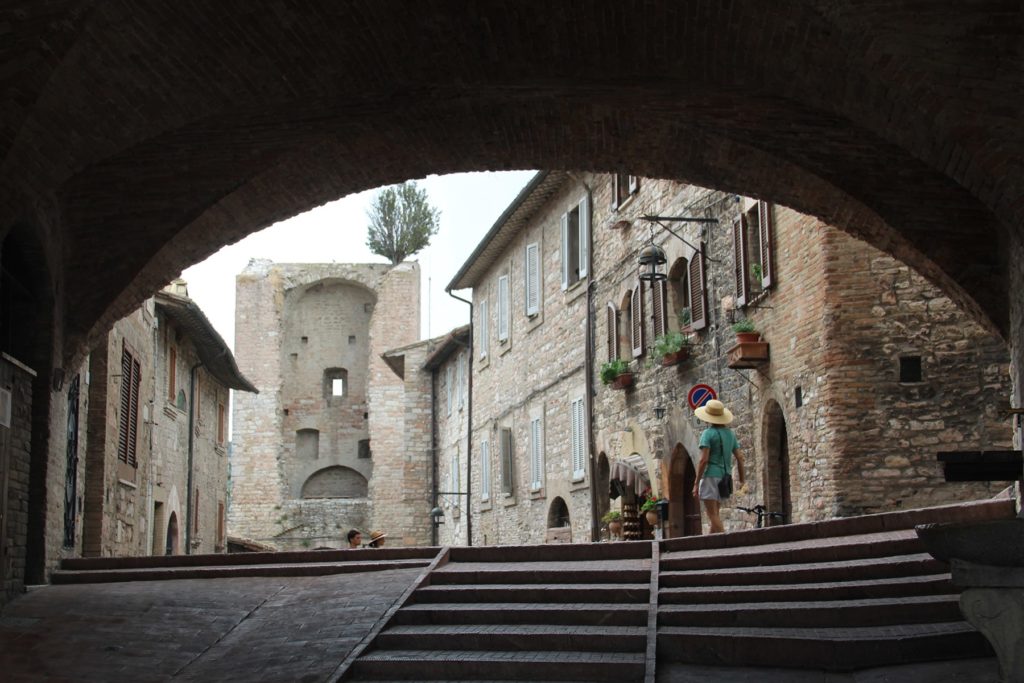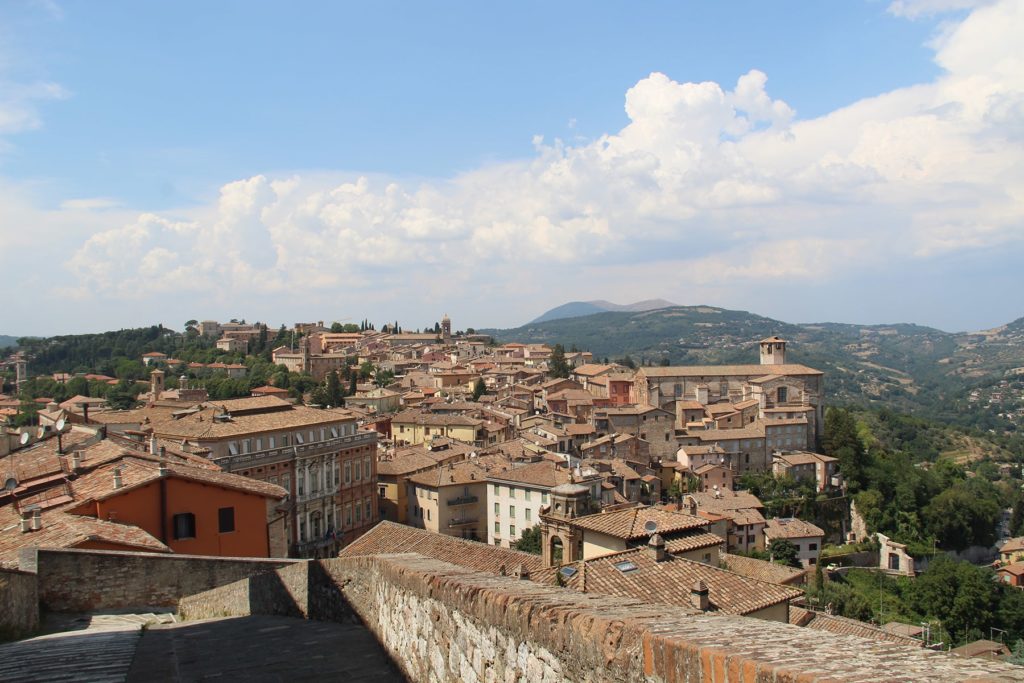Patagonia, a boundlessly vast land with breath-taking nature, has always been a lifelong dream. The opportunity presented itself in the month of March 2022, when planets lined up and the travel restrictions due to Covid finally allowed us to travel to Argentina. We, therefore, seized this opportunity and went on this trip that, although quite expensive, is surely a one-of-a-kind experience.
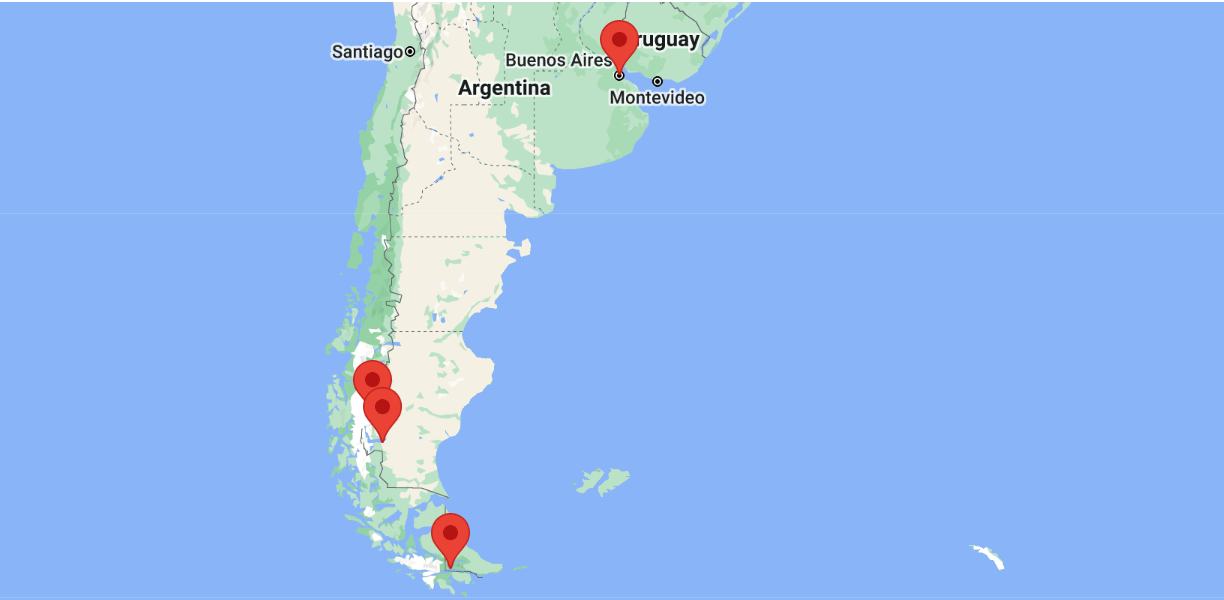
Leaving with high expectations, we were afraid of feeling disappointed, but this mysterious and dry land went above and beyond. All prices written in our 2019 guidebook actually multiplied by ten over the course of the last 3 years due to inflation and Covid, so the prices that we wrote here are only approximate. Let’s take a look at our two-week itinerary in Argentine Patagonia and Ushuaia.

| DISTANCE | TRAVEL TIME |
|---|---|
| Buenos Aires-El Calafate | 3 hours by |
| El Calafate – Estancia La Estela | 1 hour 30 by |
| Estancia La Estela- El Chaltén | 1 hour by |
| El Chaltén – El Calafate | 3 hours 30 by |
| El Calafate - Ushuaia | 16 hours by |
| Ushuaia – Buenos Aires | 3 hours by |
Table of Contents
Day 1: Arrival in Buenos Aires
During our first day in Buenos Aires, we had to get our bearings: we had to change money and get used to life in Argentina. Since it was Sunday, we also went to take a stroll in the Feria de San Telmo, a craft market that takes place on the busy streets of the neighbourhood bearing the same name.
As we were organising our trip in Patagonia, we quickly realised that Argentina is more or less as big as the whole Europe. Even though we always try to avoid taking domestic flights (and the 16-hour bus journey from El Calafate to Ushuaia is a testament to that), we had to take a flight from Buenos Aires to El Calafate, the main city in Argentinian Patagonia, since it would have taken us three days to get there by bus.
Day 2: Leaving for El Calafate, Laguna Nimez
Our flight with Aerolineas Argentina left in the morning from the Jorge Newbery airport. We explain all details regarding transportation in the article “travel tips for Argentina”. Once we reached El Calafate, we made sure to eat the Calafate berry straight away in the form of ice-cream. Legend has it that whoever eats this berry, which is, by the way, the only native fruit growing in Patagonia, will return to Patagonia during their life time. We couldn’t miss this chance!
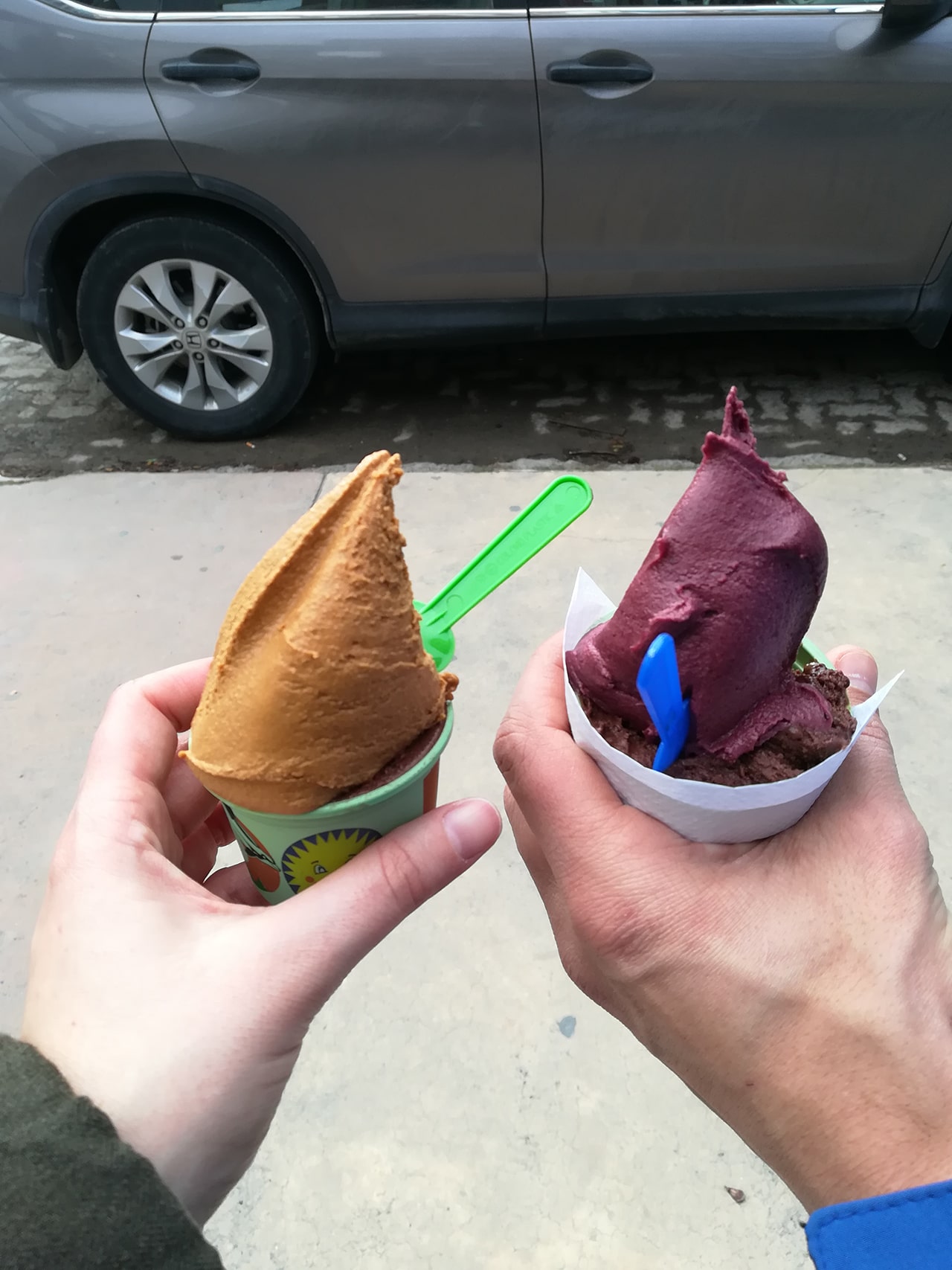
In the afternoon we visited the Laguna Nimez. The lagoon at sunset is wonderful. The path around the lagoon is 3km long and it reaches the beach by the Argentino Lake, the biggest lake of the country. Along the path you can find information panels about the local flora and fauna, especially bird species.
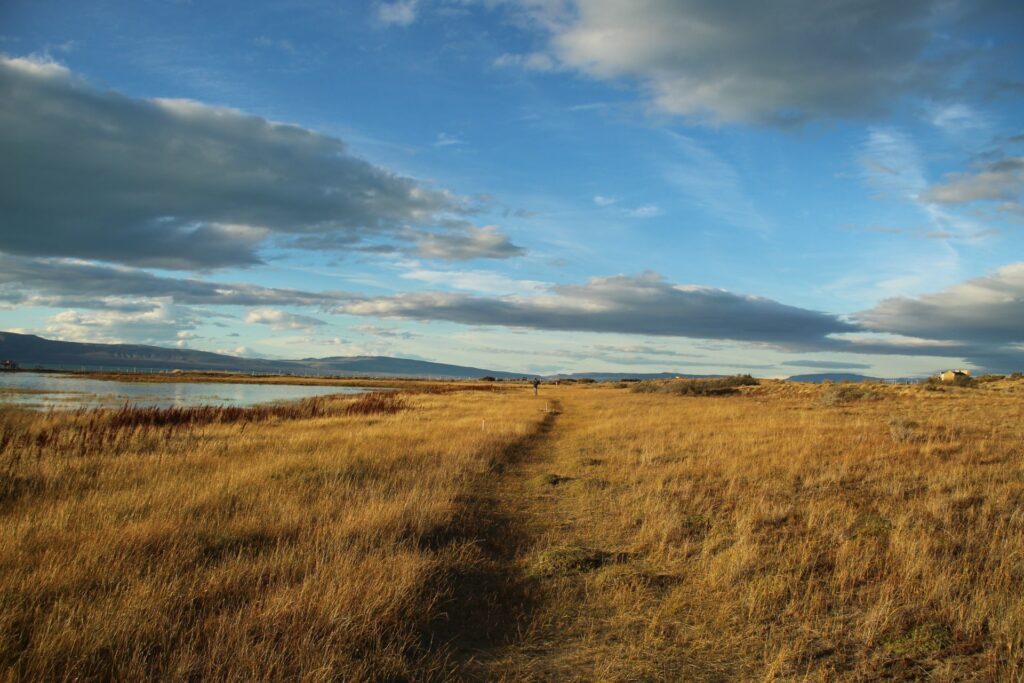
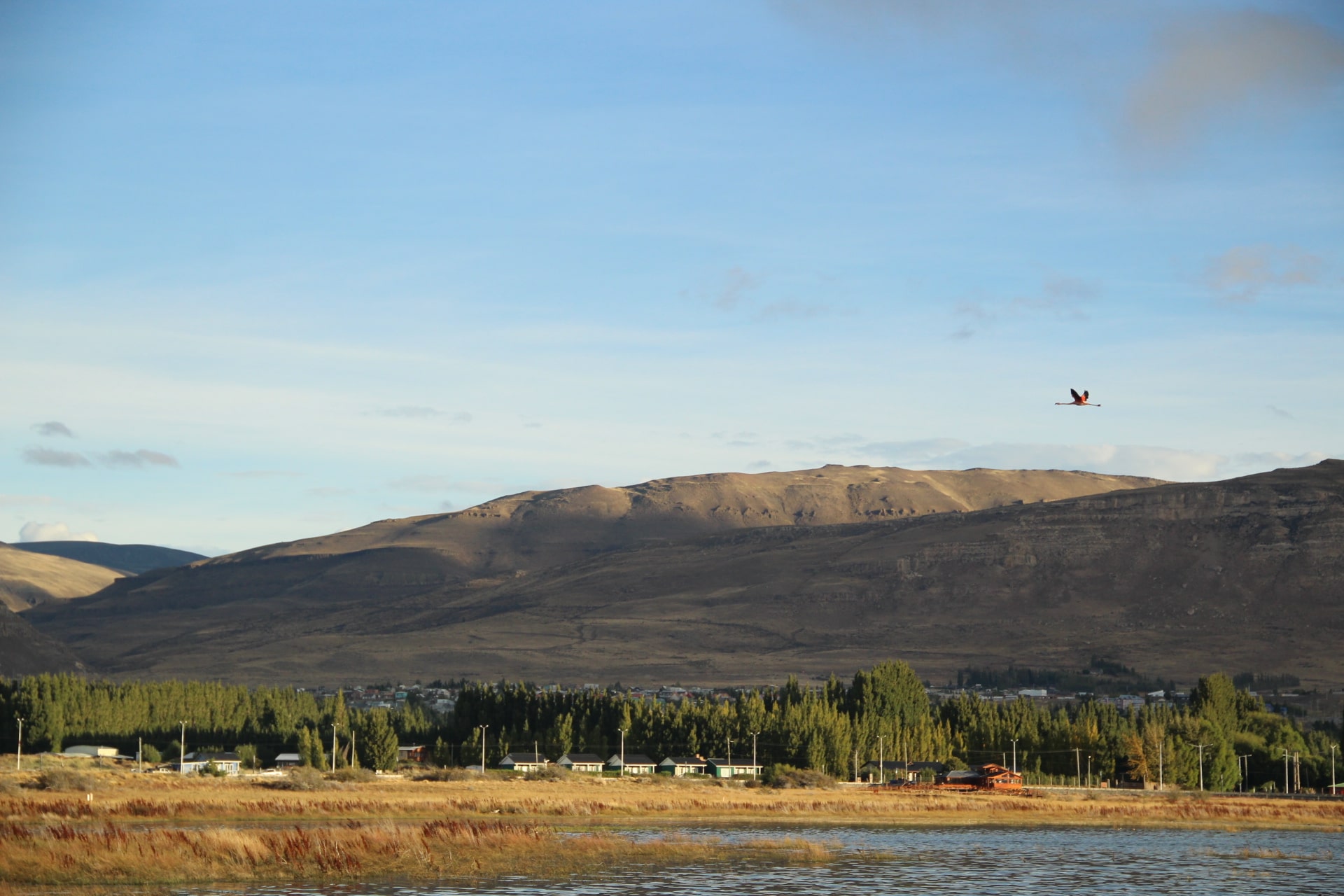
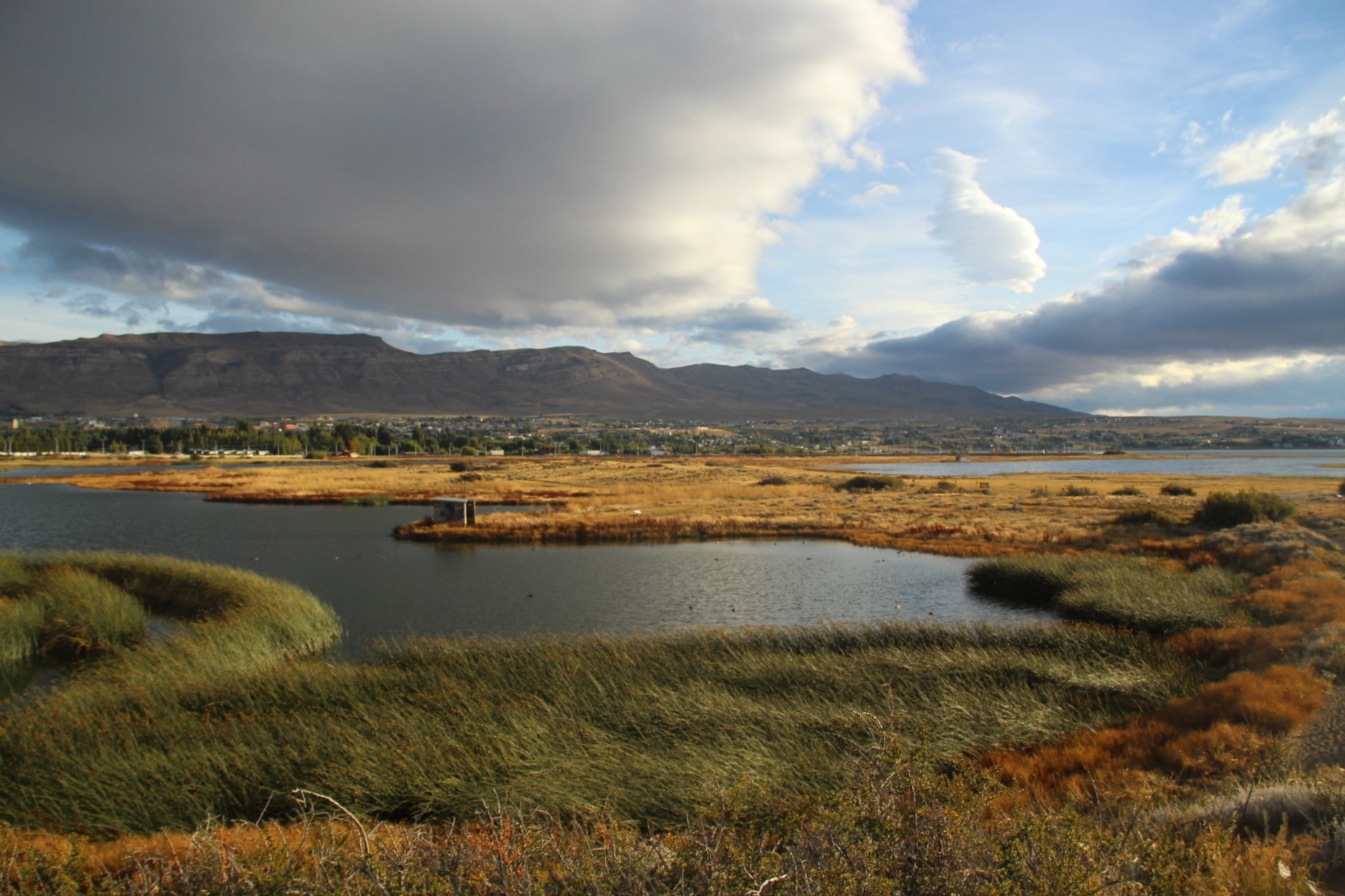
Laguna Nimez
Ticket price: 1,000$ (4.60€) per person.
Duration visit: roughly 2 hours.
Exchange rate during our trip to Argentina: the official bank exchange rate was 1 Euro for 105 Argentinian pesos $, while the non-official rate, also called blue dollar or blue euro, was 1 Euro for 210-230 $. Read our article about tips and tricks in Argentina to get more info about the exchange rate. In this article we will use the exchange rate of 215$, since it is the rate that we found most often during our trip. Exchange rates have surely changed in the meantime, so the prices that you see here are to be taken with a grain of salt.
Day 3: Perito Moreno Glacier
To visit the Perito Moreno glacier, we relied on the agency Hielo y Aventura which also organises hikes on the glacier, being the only agency that has the permission to set foot on it. Our tour started off with the bus journey to the Perito Moreno, which allowed us to see the Patagonia native woods which are much greener than the steppe. The glacier is part of the Parque nacional los Glaciares which includes many glaciers of the Santa Cruz province, which make up the third biggest source of drinkable water in the world.
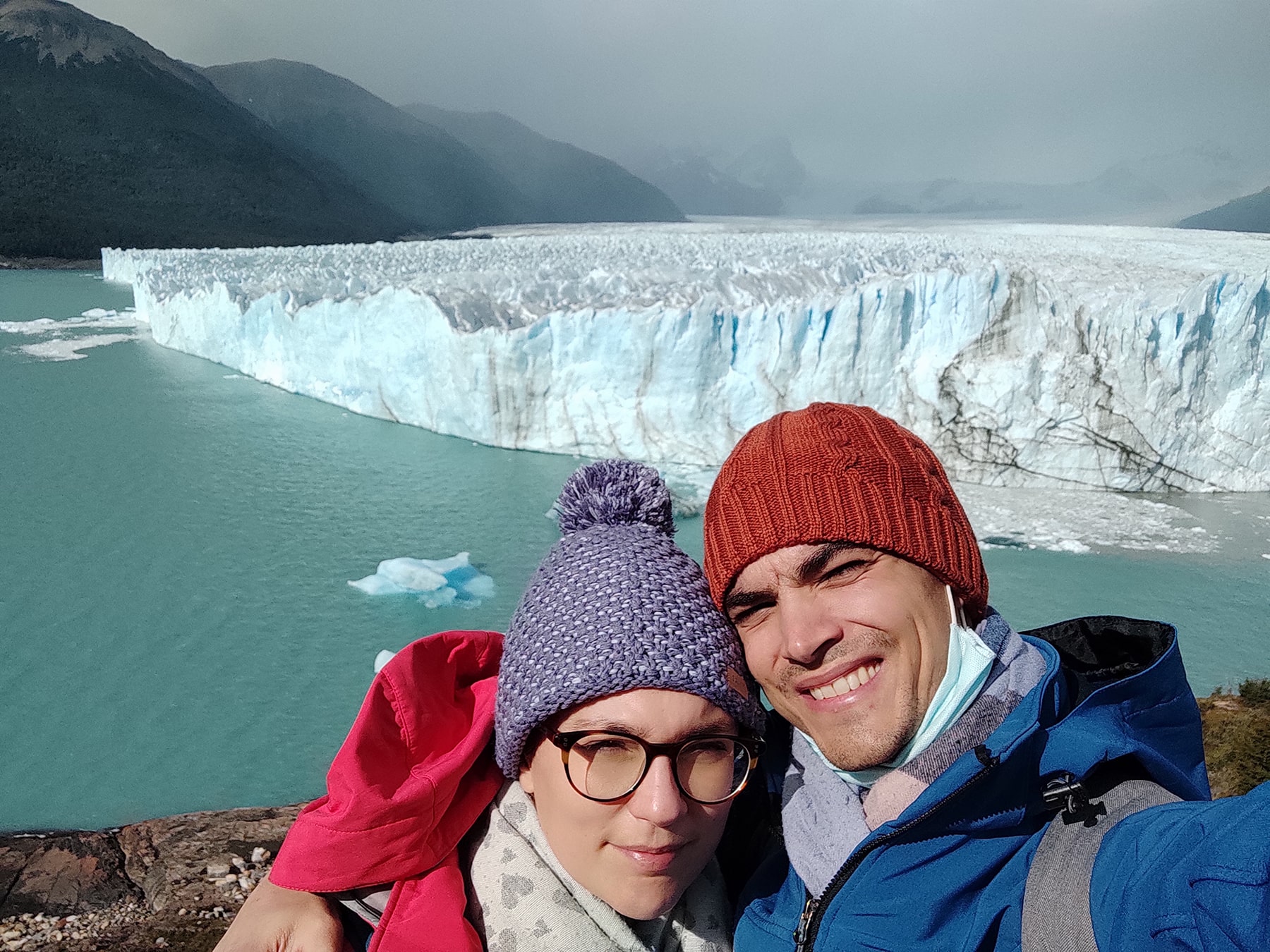
The Perito Moreno glacier isn’t succumbing to climate change, yet, but it rather moves under the pressure of compact snow descending from the Andes. Once we reached the boardwalk, from which we could admire a nice view of the glacier, we actually saw some ice blocks falling under the pressure. The glacier has a white colour with bright sky-blue veins and the texture looks like meringue, although its surface is actually hard and scraping.
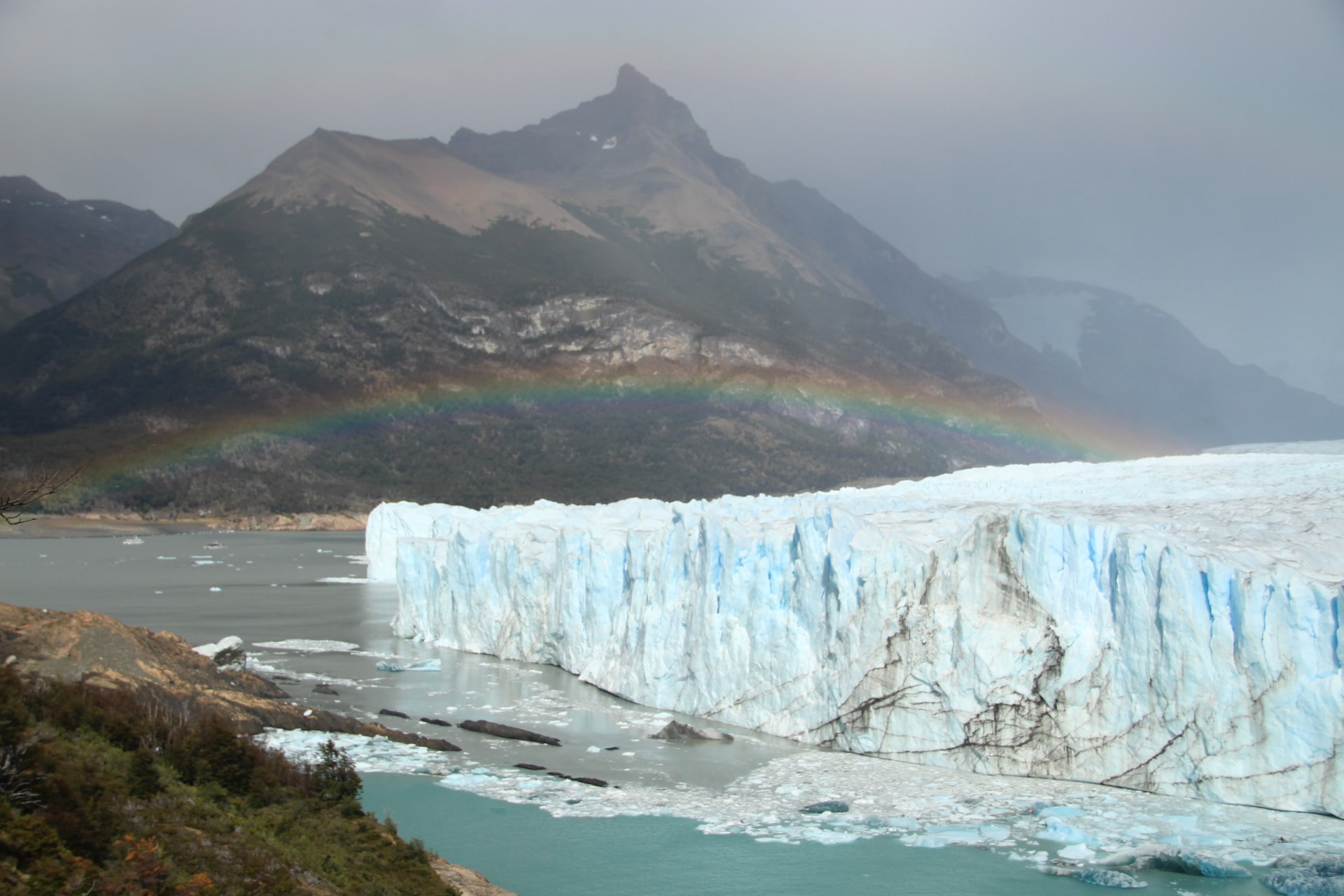
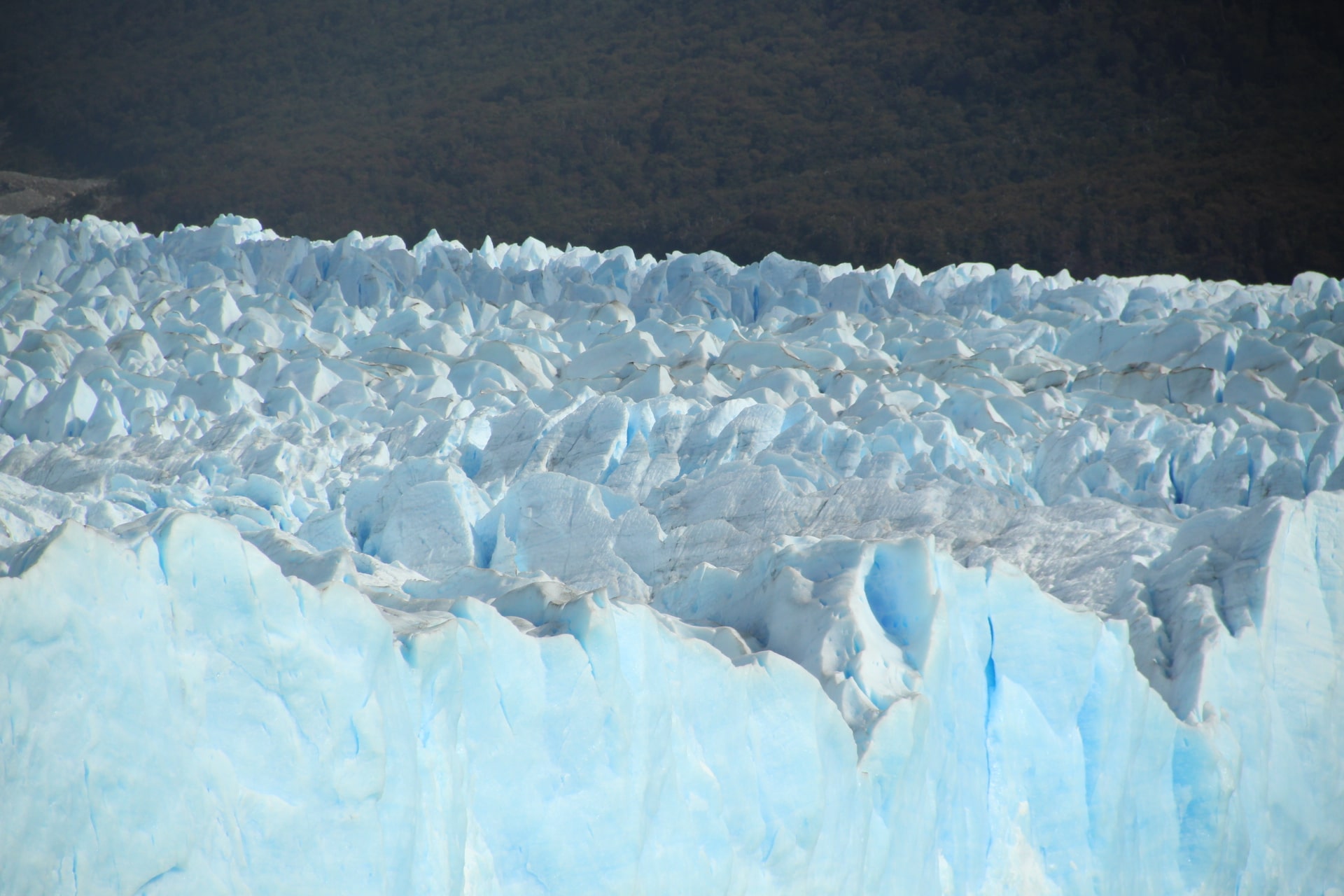
We opted for the mini trekking with Hielo y Aventura, which also included a 20-minute boat ride to the left side of the glacier, where the hike begins. Seeing it from below, the 75-metre glacier looks even more majestic. The mini trekking, for which we had to wear a helmet and crampons, “only” lasts an hour and a half, but it is totally worth it. Hielo y Aventura also organises longer hikes for expert hikers.


Once we got back to El Calafate, we had another unique, must-do experience awaiting us: eating asado, the Argentinian barbecue. We went to the restaurant “La Tablita” that we really liked. Remember to specify your preferred degree of doneness for the meat, if you don’t want to eat it “bien hecha”, i.e., well-cooked, which is how people in Argentina usually eat meat.
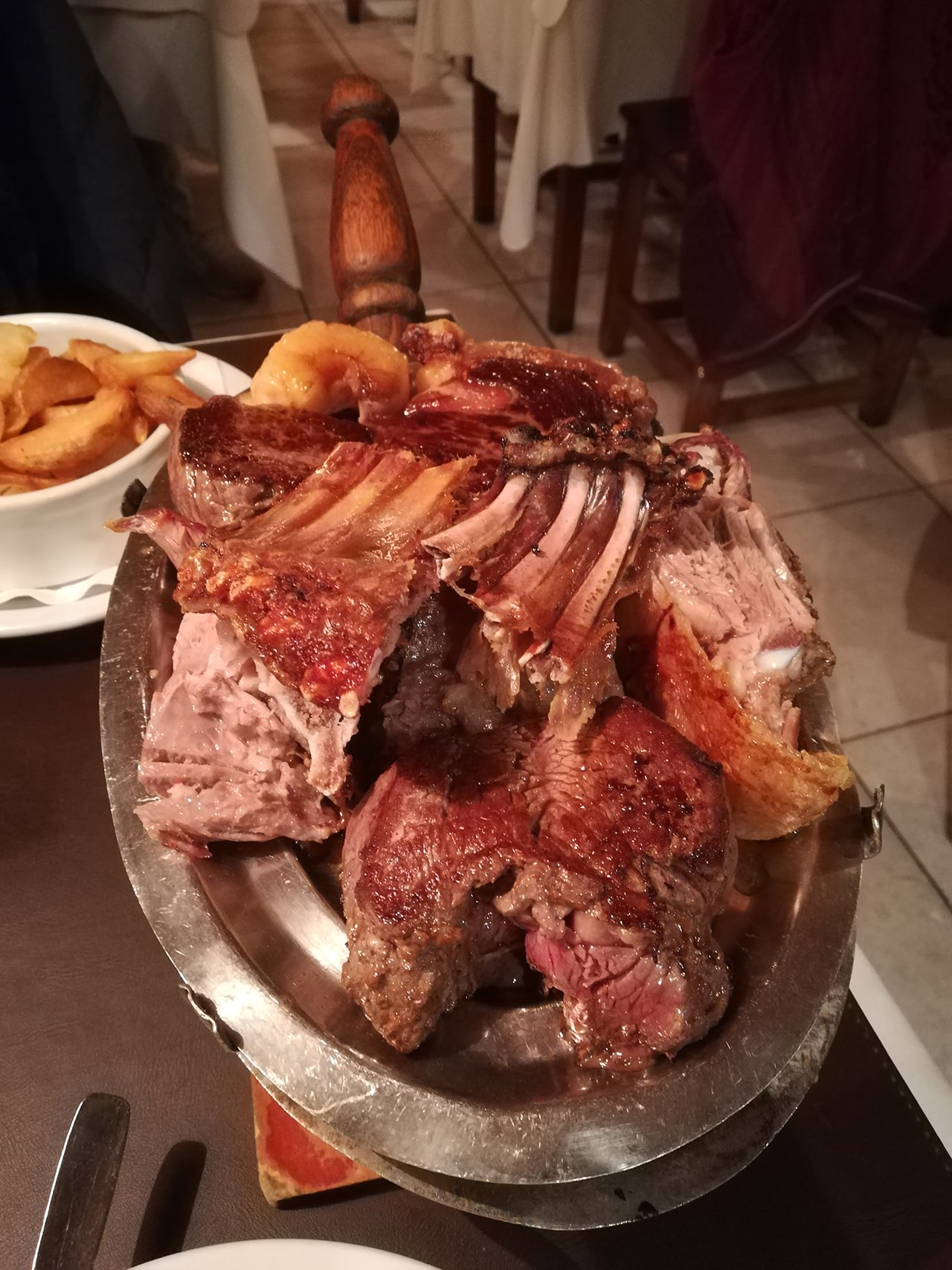
Parque nacional los glaciares
Price ticket: 2,520$ (11.70€) per person. Not included in the hike price.
Round trip from El Calafate to the Glacier: 2 hours 30.
Mini hike on the glacier
Price ticket: 25,500$ (118.60€) per person.
Duration of the hike: 3 hours.
Day 4: Estancia la Estela and horseback riding
Overnighting in an estancia in the middle of nowhere is a must during a trip to Argentina. We picked the Estancia la Estela which is located midway between El Calafate and El Chaltén, and which also arranges horseback riding, another must-do in a trip to Patagonia. To get to and leave the Estancia, we arranged a private transfer with the estancia itself.
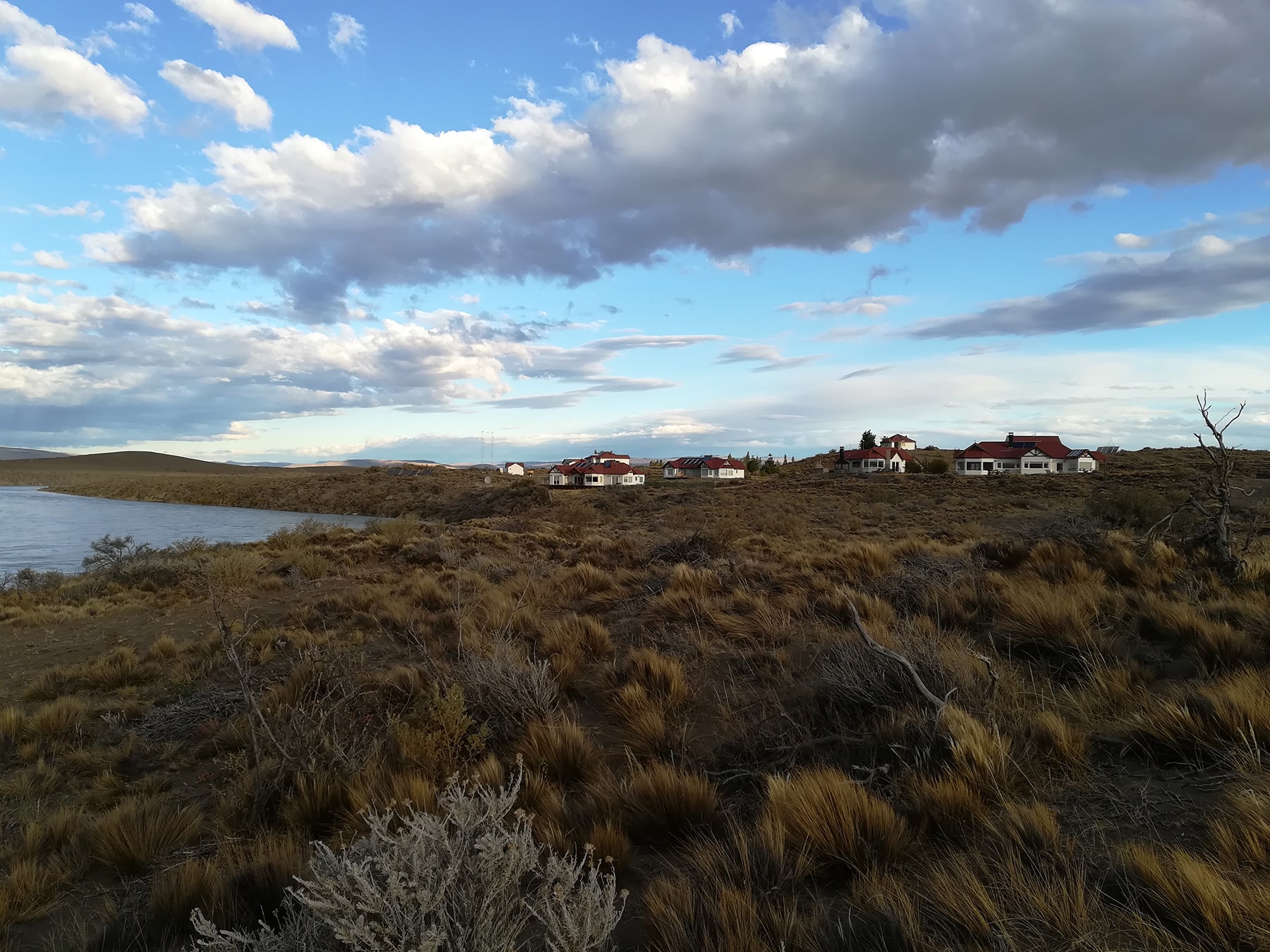
Once we got to the estancia, we immediately jumped on the horses and left for a 4-hour ride. The ever-present Patagonian wind burned our faces, while we rode through the steppe and dunes until we reached the Viedma lake.
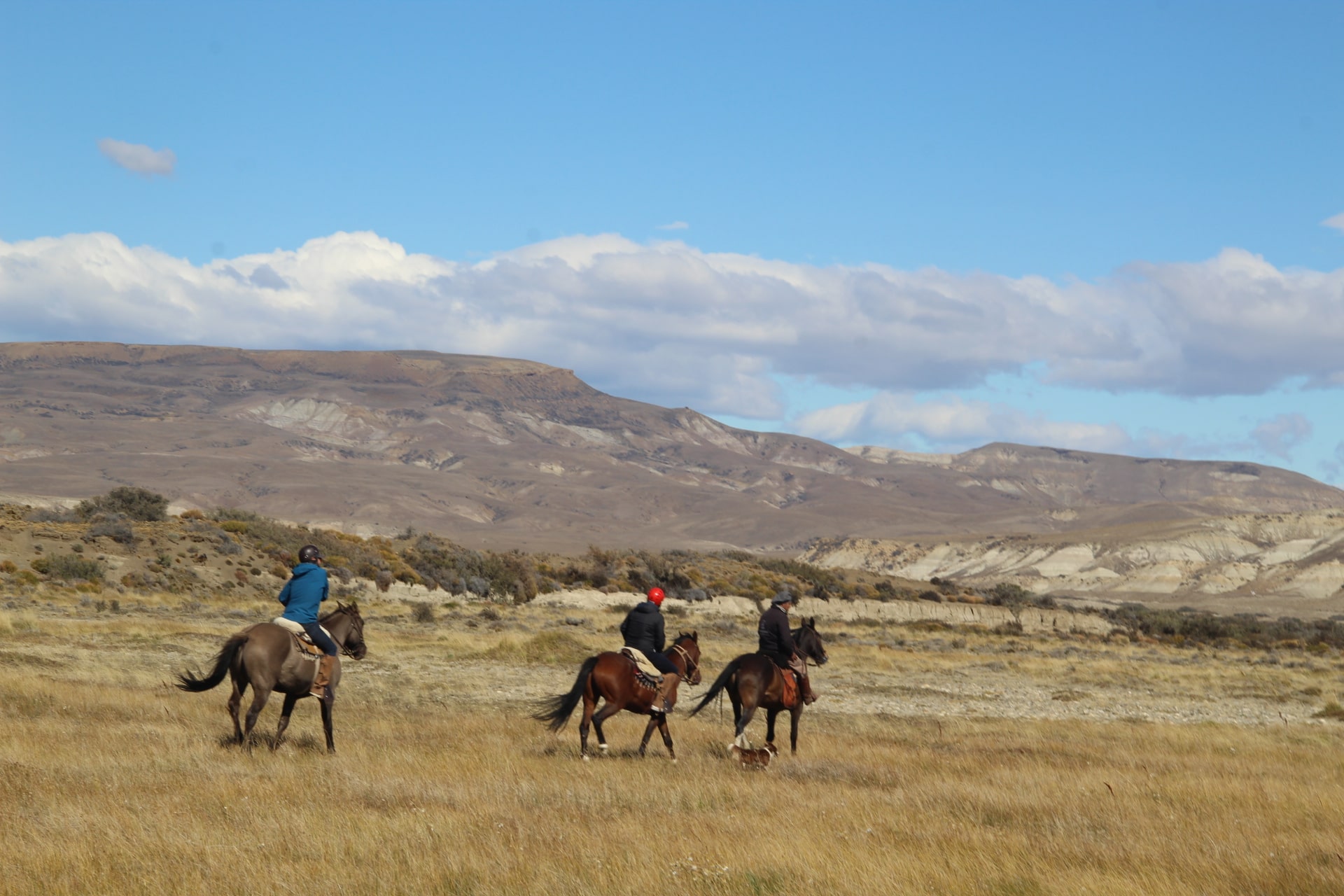
Overnighting in estancias is quite expensive, but some estancias offer interesting reductions if you pay in dollars or euros.
Private transfer El Calafate – Estancia la Estela
Price: 43€/car.
Travel time: 1 hour 30.
Long horseback riding
Price: 99€ per person*, lunch included
Duration: around 4 hours.
* The prices of the Estancia are in euros, since we paid everything in euros to get a 40% price reduction.
Day 5: El Chaltén, Laguna Torre hike until the first Mirador
El Chaltén is the perfect destinations for all hikers. The capital of Patagonia trekking offers several paths of different levels. The Information Centre of the Parque los glaciares is very well equipped and will tell you all you need to know before setting out. In the case of particularly difficult hikes (not the hikes that we picked), you need to register your name at the centre.

For the first day at El Chaltén, we decided to take the Laguna Torre path until the first Mirador (viewpoint) on the Cerro Torre (round trip: around 6 to 7km). The hike until the first Mirador is quite easy. We went through the native forest, where we saw some busy woodpeckers peeking behind some tree trunks, and we climbed the slightly ascending slope until we reached the panoramic view on the glacier.
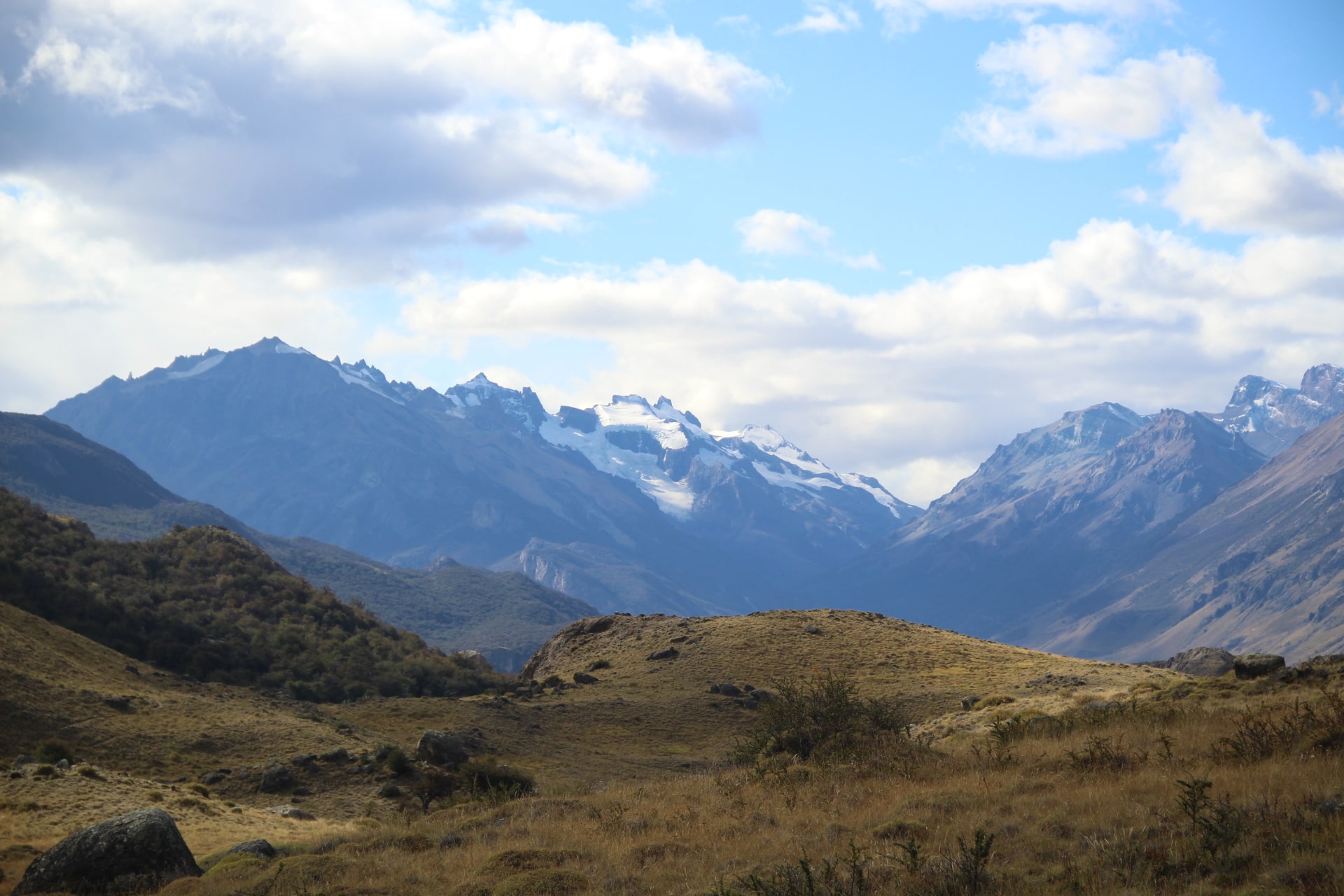


Private transfer Estancia la Estela – El Chaltén
Price: 43€/car.
Travel time: 1 hour.
Laguna Torre hike until the first Mirador
Hike duration: 2:30 hours round trip.
Day 6: El Chaltén, Laguna de los tres hike
This is the longest hike that we have in store for this trip: the Laguna de los tres hike. At the beginning of this hike, as is the case with other hikes as well, there is an information sign, a tap with source water (you can also fill your water bottle straight in the river along the path), as well as charging stations with solar panels for your phone. The hike is divided into three parts: 3km of alternating ascents and flat paths in the wood; 6km of flat path that also goes through the Capri Lagoon camping site (where it also possible to overnight) and the last 3km climb.
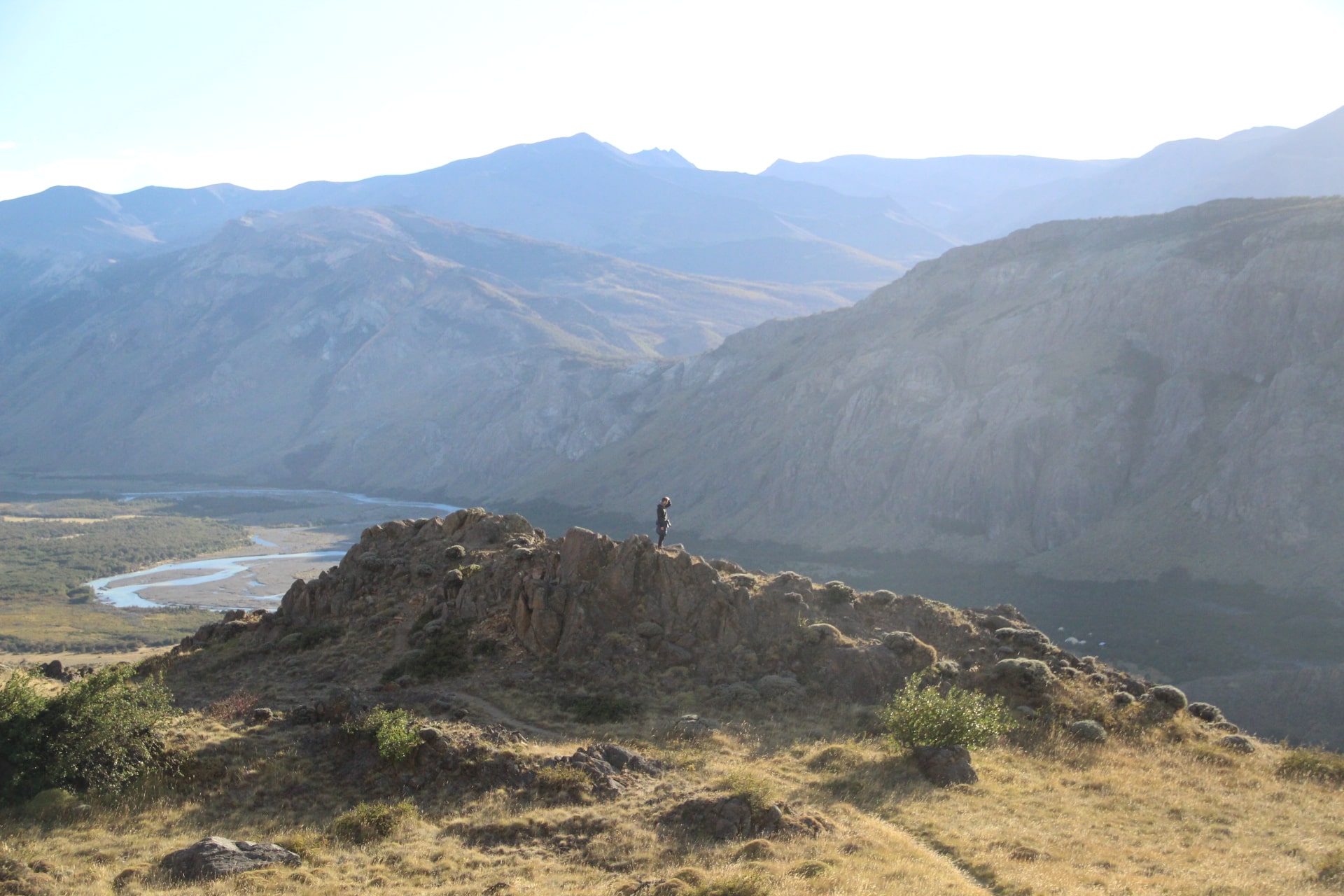

At km no. 9 there is a billboard saying: “warning, high intensity” and even though the path might seem relatively “simple” at the beginning, it actually grows in intensity as it progresses, also due to the fact that there are huge rocks on the path.
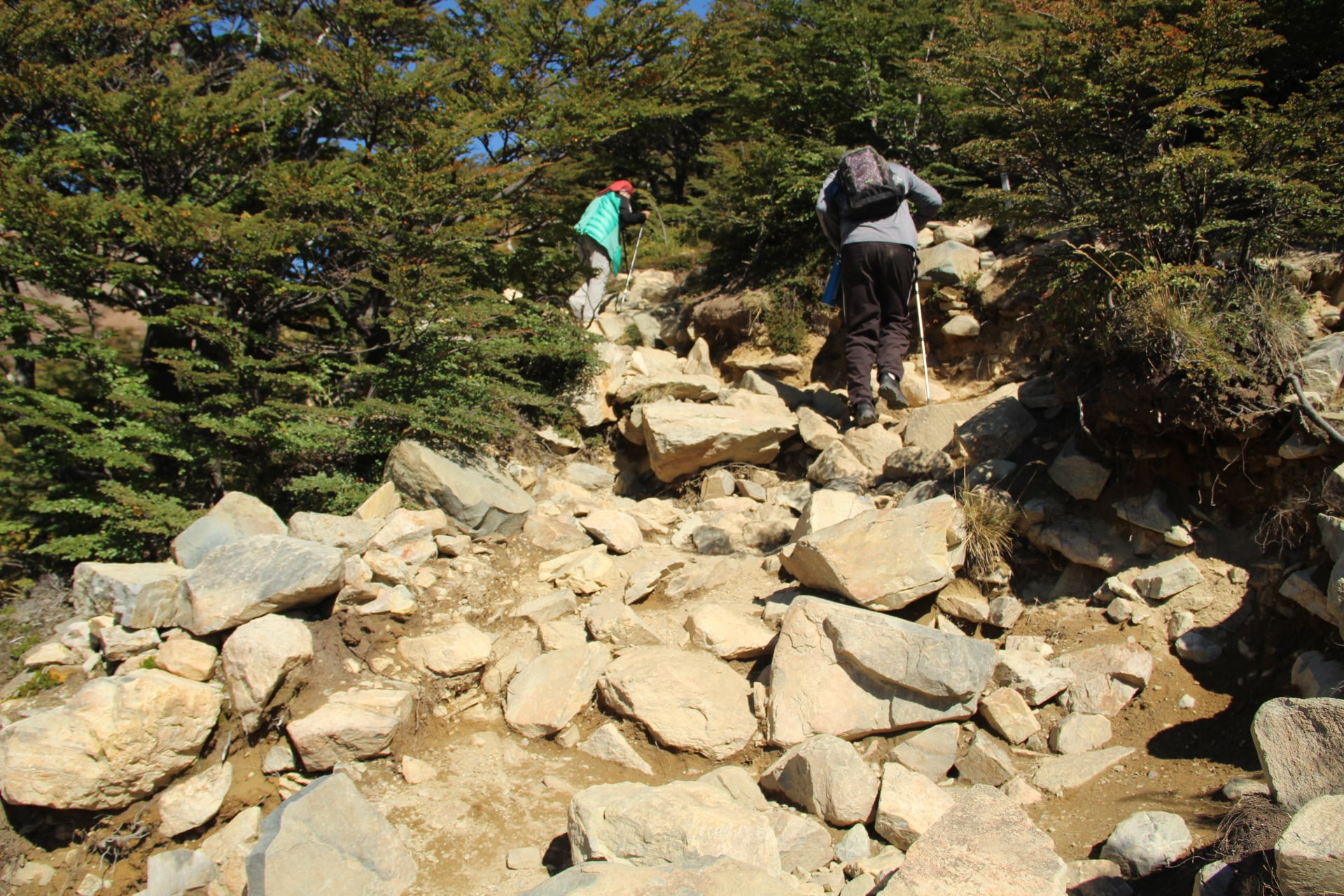
The effort is rewarded by the wonderful view of the turquoise lagoon overlooked by mountain peaks, including the Fitz Roy. Do not miss out on the Laguna sucia, located to the left side of the Laguna de los tres, which has an incredible teal colour, and the Rio Blanco glacier.
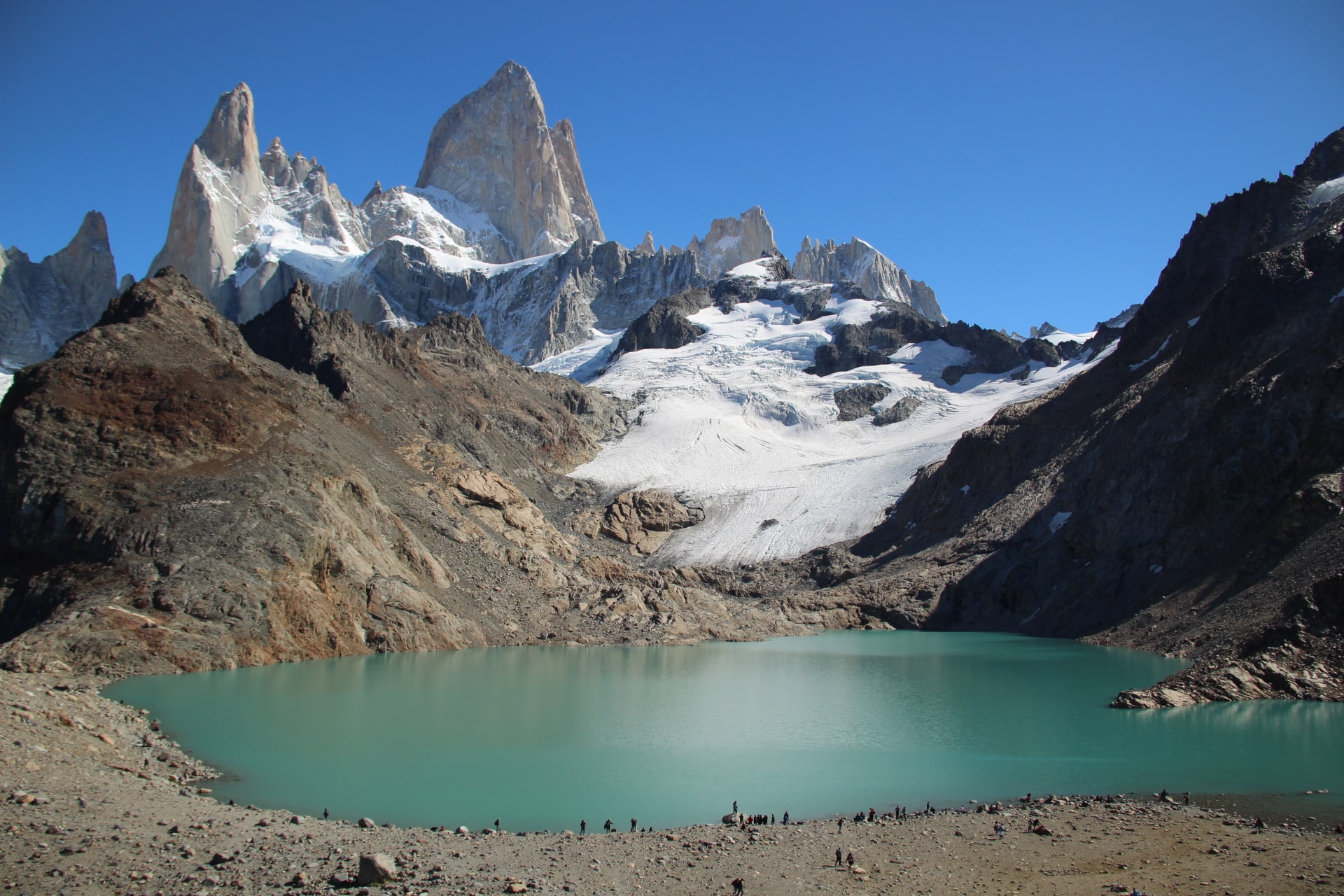
On the way back, after having descended the last 2 km, which are as bad on the way down as they are on the way up, we decided to do a detour, adding 4km (round trip), to see the Piedras blancas glacier. Although the glacier looked wonderful from afar, our legs were starting to ache. There are many ways to walk this hike, we decided to do it all by foot.
Laguna de los tres hike with detour to the Piedras Blancas glacier (28km)
Duration: around 9 hours round trip.
Day 7: El Chaltén, Chorillo del Salto hike and back to El Calafate
Although our legs definitely ached, we decided to make one last effort and walk the Chorillo del Salto hike. It is a simple, flat hike that is 6km long there and back, and it reaches the Chorillo del Salto waterfall which can, by the way, also be reached by car.
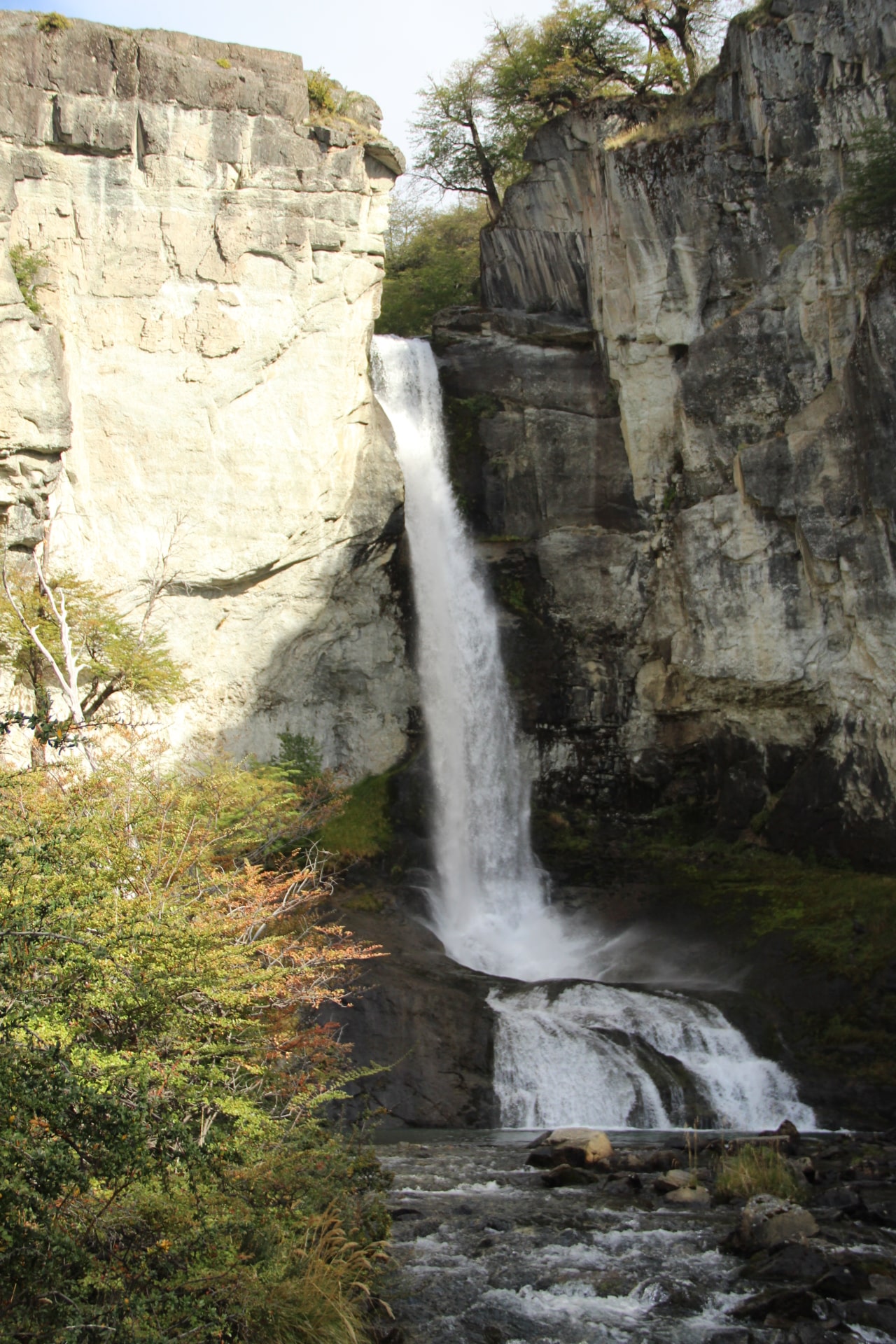
Afterwards, we took the bus to get back to El Calafate, where we waited until nightfall to take the bus to Ushuaia.
Chorillo del Salto hike
Duration: around 2 hours round trip.
Transfer El Chaltén – El Calafate
Bus ticket : 12,500$ (11.60€) per person.
Journey time: 2 hours 30.
Day 8: Bus to Ushuaia
Our bus to Ushuaia left at 3 am and we had to change bus at 7 am in Rio Gallegos. The second bus journey was quite rough, since we had to cross 2 borders – Argentina to Chili and back -, so we had to get down the bus and go through the checkpoints by foot. Remember not to bring fresh fruit because it will be taken from you. We reached Ushuaia around 7 pm and we arranged several activities for the following days thanks to the help of the tourist office which is very well organised (they also have an app).
Transfer El Calafate - Ushuaia
Bus ticket : 10,280 $ (47.80€) per person.
Journey time: 16 hours.
Day 9: Ushuaia, Parque Nacional Tierra del Fuego
Beside the harbour, there is a shuttle service called transporte regular connecting the city to the Tierra del Fuego National Park and the Esmeralda lagoon. They gave us a very good discount since we took two tickets, one for the park and one for the lagoon. During our first day in Ushuaia, we decided to go hike in the National Park which is around twenty minutes away from the city. The bus stops in various areas in the park, so on the way there we got down at the beginning of the sendero de la costa and we took the bus on the way back at 5 pm at the end of the Ruta 3. On the way there, the bus left us in a beautiful open space on the lake framed by the Chilean mountains, where there is the southernmost post office in the world.
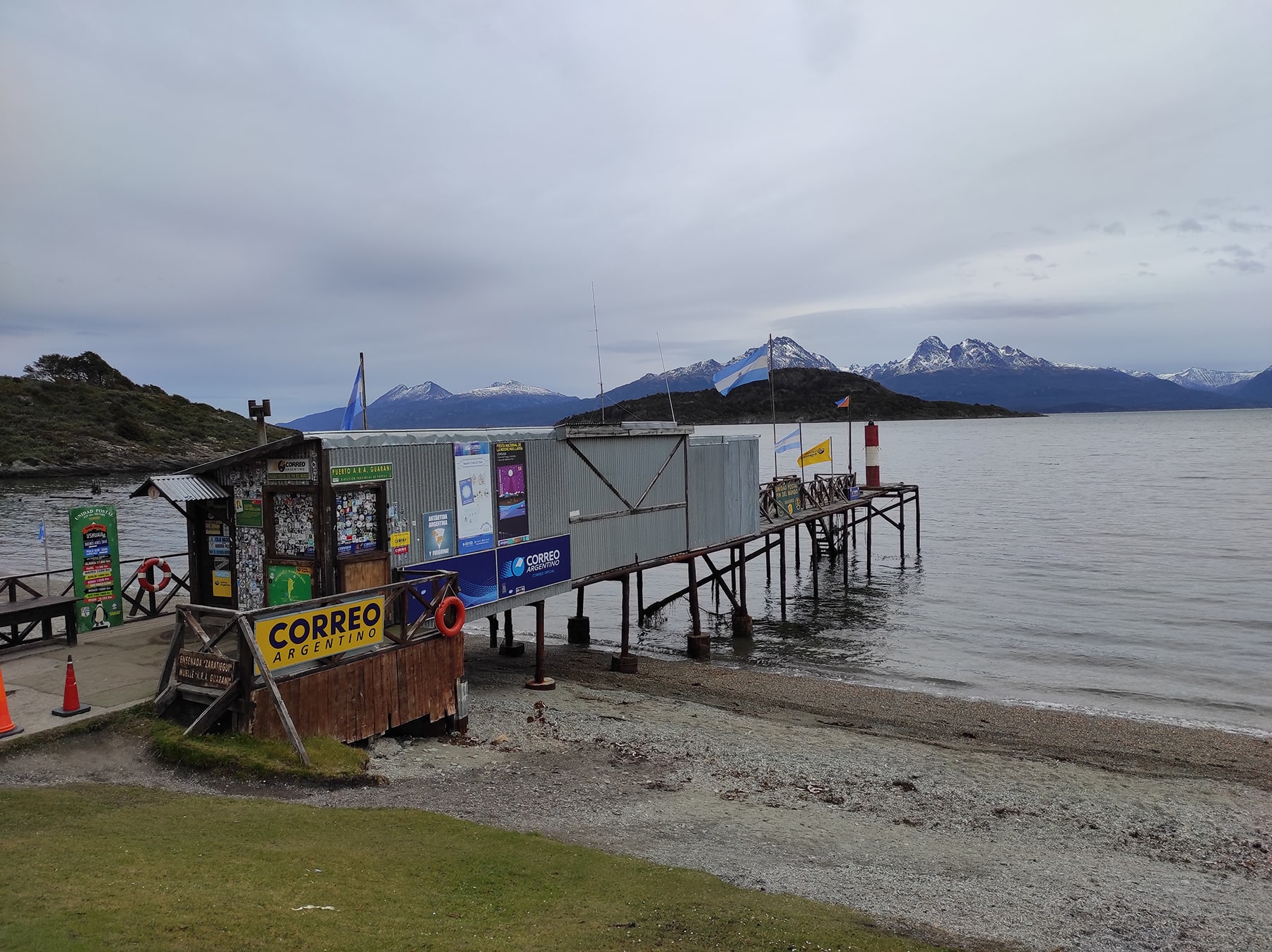
The sendero de la costa goes through the wood which is far more luxuriant and humid than Patagonian woods, and offers us great views on the coastline, as the name suggests. This hike is around 8km long, one way.

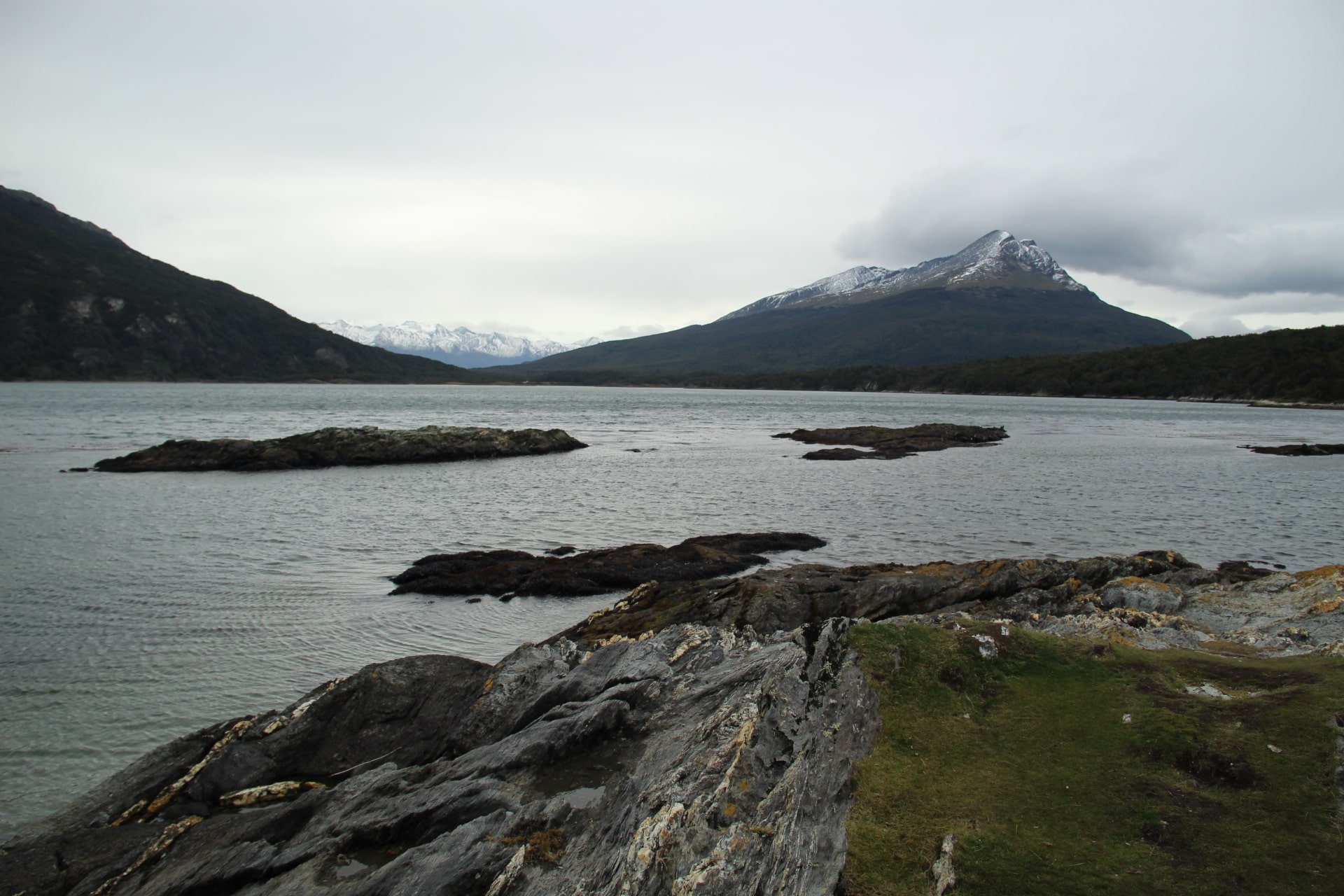
After lunch, we went to see the Mirador on the Roca Lake and then, we took the sendero de la isla which is the most picturesque one, according to us. As a matter of fact, it offers a lot of panoramic views on the lagoon and on many islets.
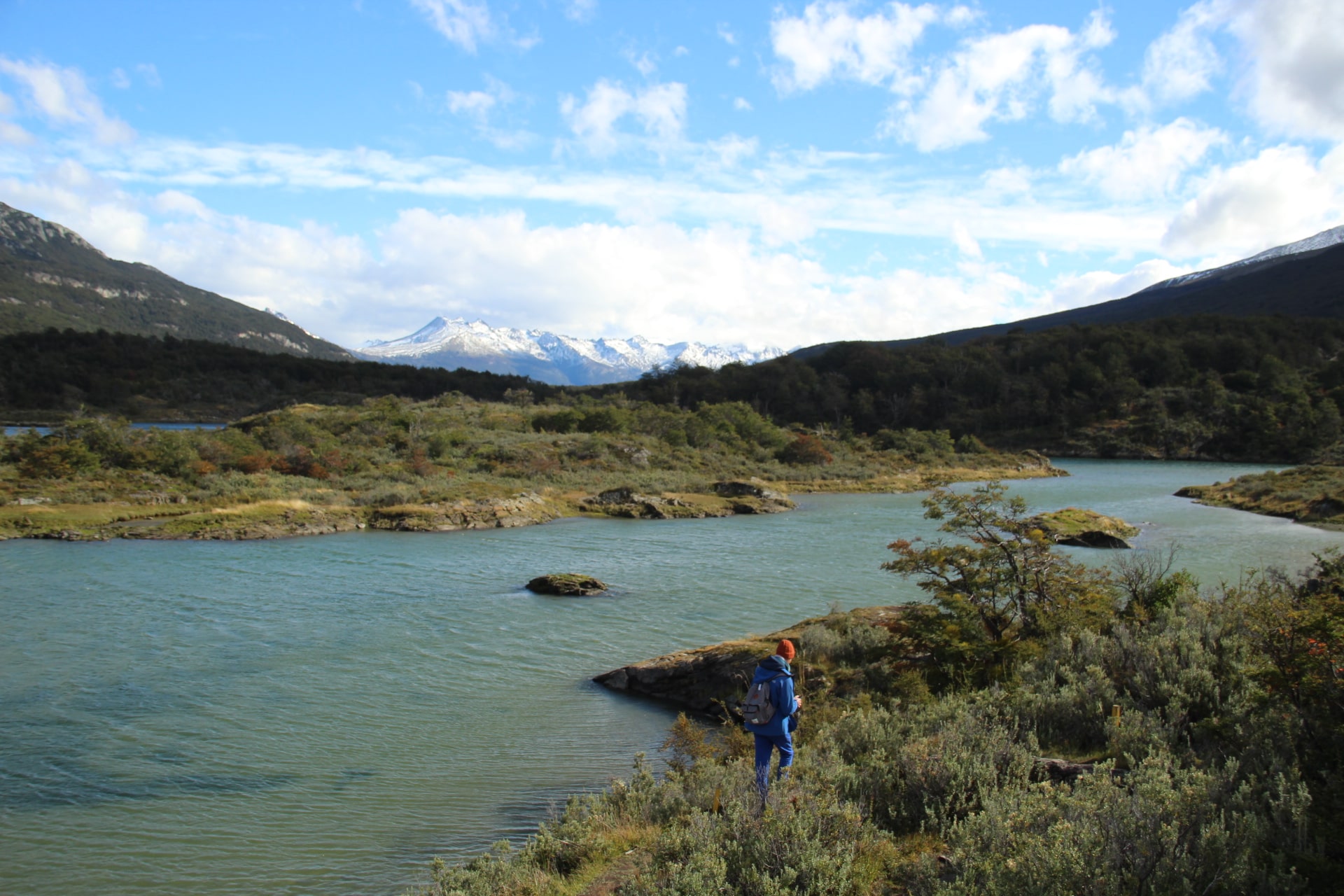
Afterwards, we reached the end of the Ruta 3, that is the end of the southernmost road in the world. We took the bus back to the city from the open space in front of the Ruta 3 panel at 5 pm.
Transfer Ushuaia – Tierra del Fuego national park
Bus ticket : 2,000 $ (9.30€) per person.
Journey time: 20 minutes.
Tierra del Fuego national park
Ticket price : 2,100$ (9.70€) per person.
Day 10: Ushuaia and boat tour on the Beagle channel
We decided to visit the natural history museum (museo del fin del mundo), rather than the prison museum (which is another must-do in Ushuaia, which has unfortunately become very expensive, 3,800$ (17.60€) per person at the moment of our visit). The natural history museum is divided into two sections: the first section is very interesting and it explains the history of Ushuaia, as well as its flora and fauna, while the second section, which is located in the old government building, explains the political history of this city and it is less interesting without a guided visit. Our boat tour starts at 3 pm. We picked the agency Canoero which offered the tour that we wanted to do: a 5-hour tour with a stop at the penguin island. There are many other agencies offering the same tour, as well as shorter tours without the penguin island, overland journeys, visits to the Estancia Haberton and overland visit to the penguin island etc. You can find all the info at the tourist office.
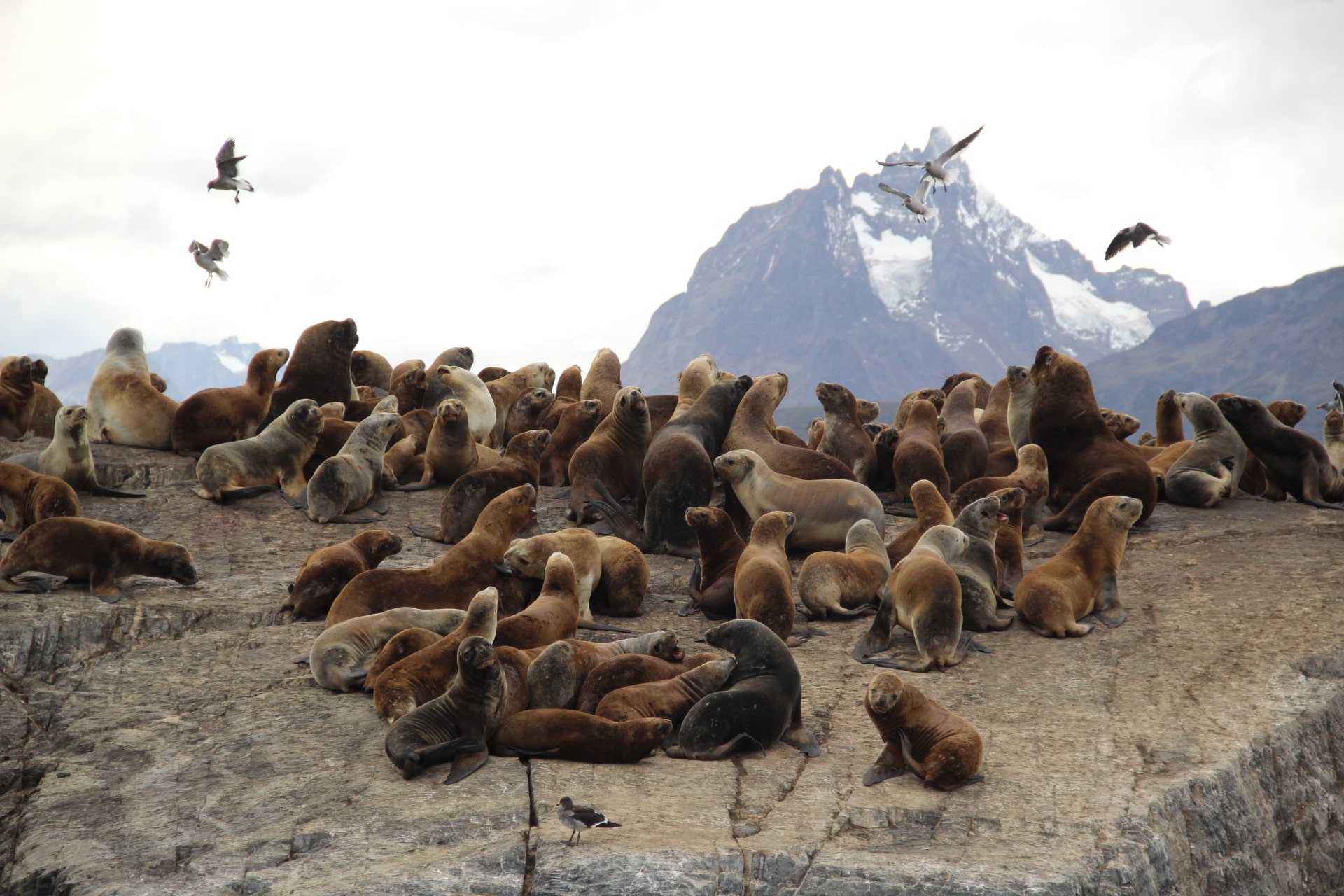
The boat tour includes several stops at the sea lion island, at the lighthouse and then at the penguin island. The month of March is the last month to observe penguins that make a halt on the island to brood their eggs and raise their babies before migrating. In mid-March there are only few penguins left, belonging to two different species, Magellanic and Gentoo penguins. On the contrary, there are many sea lions both on the rocks and in the water, where they joyfully jump around. We also saw some dolphins, wonderful seagulls with impressive wingspans and a small humpback whale.
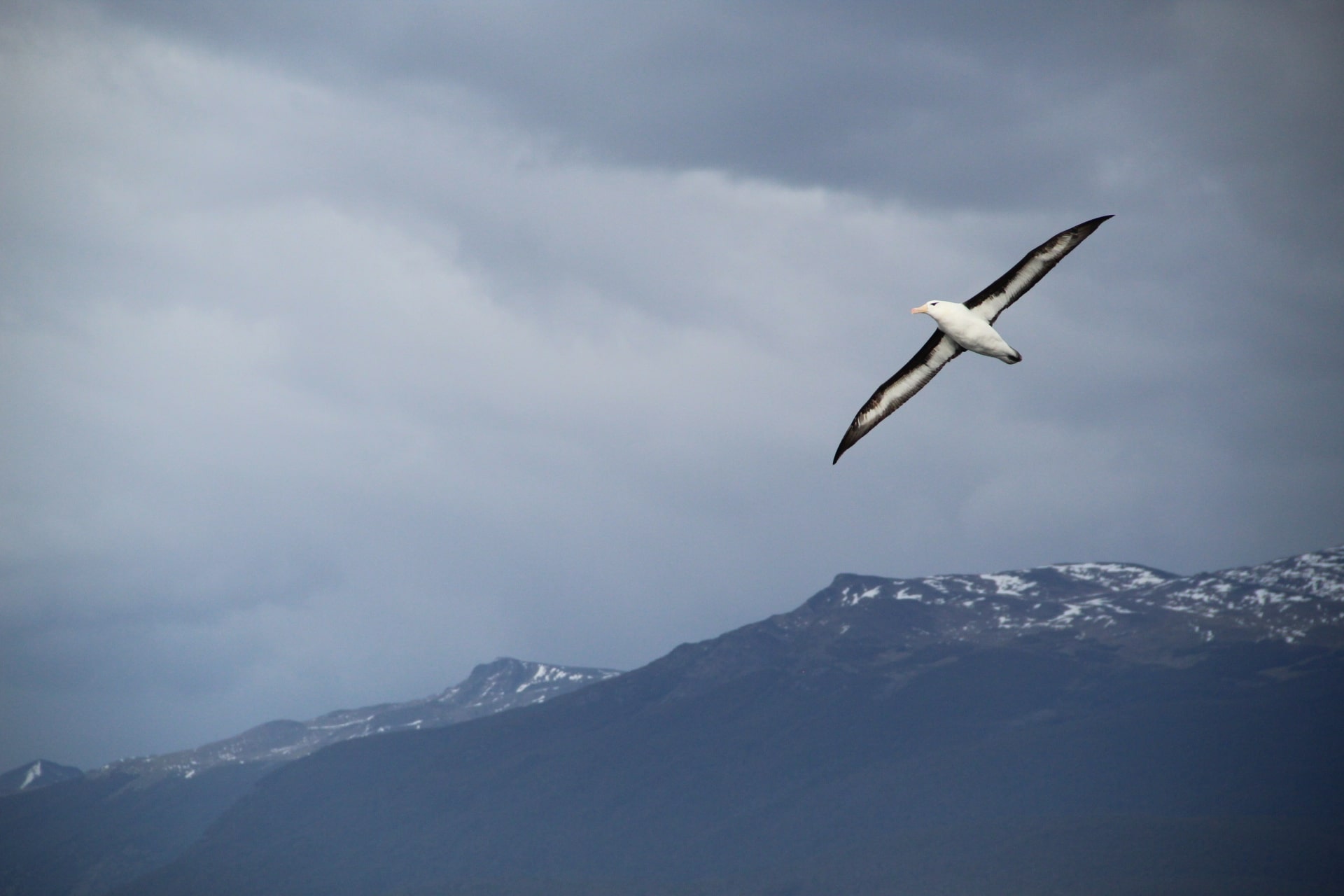

The months of March and April are ideal to see whales in the channel, but that is not always possible.
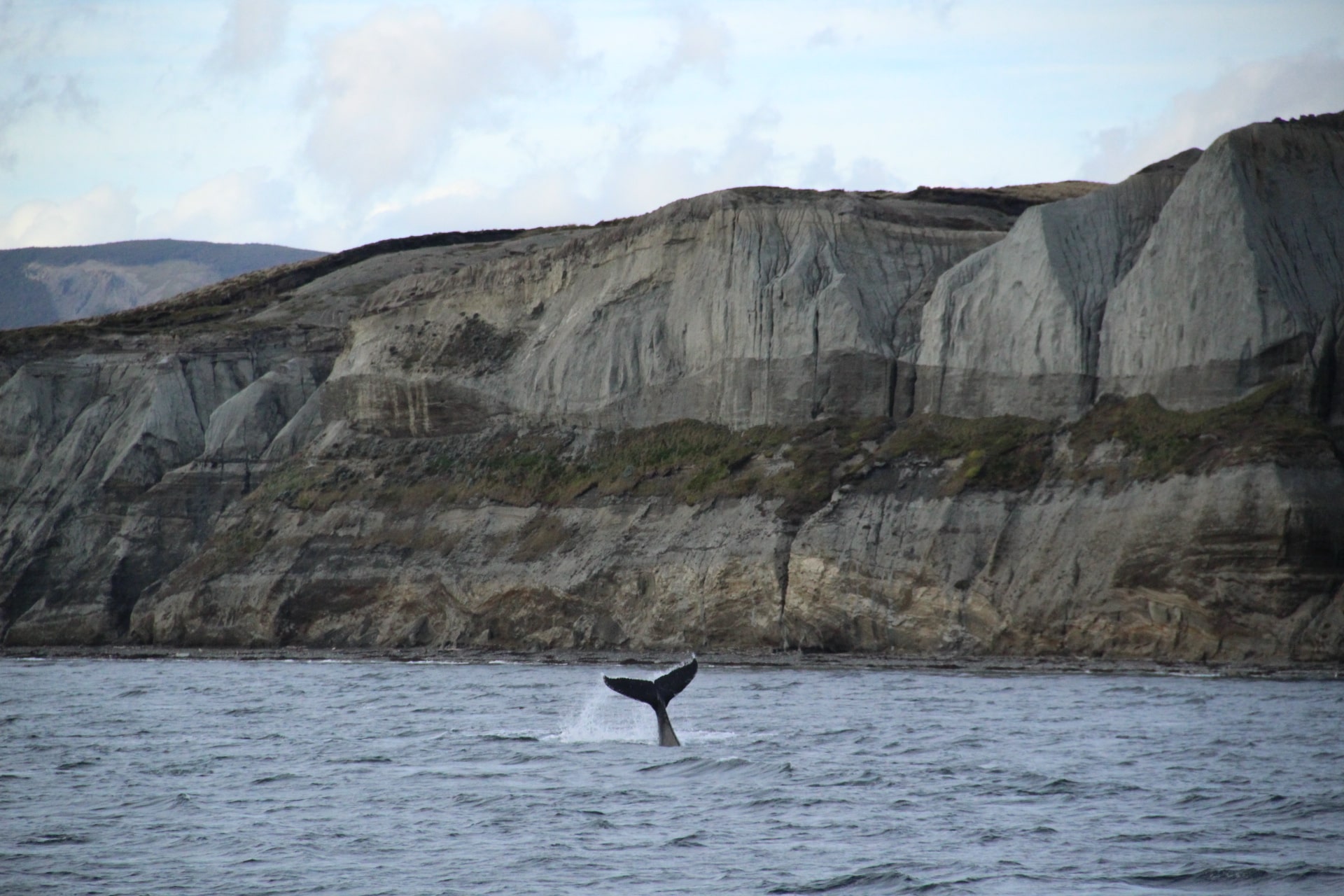
Museum Fine del Mundo
Price ticket : 500$ (2.30€) per person.
Boat tour with Canoero agency
Price ticket : 8,000$ (37.20€) per person.
Duration: 5 hours.
Day 11: Ushuaia and Laguna Esmeralda
Lastly, we hiked the Laguna Esmeralda trek; we reached the beginning of the hike by transporte regular shuttle. It is a shorter hike (8 km round trip) which goes through a wood and a valley. The hike slightly climbs in the wood and right before the lagoon, but the path in itself is very easy, apart from the impressive amount of mud there is everywhere. The lagoon is not part of the national park, so you don’t have to pay an entry ticket.
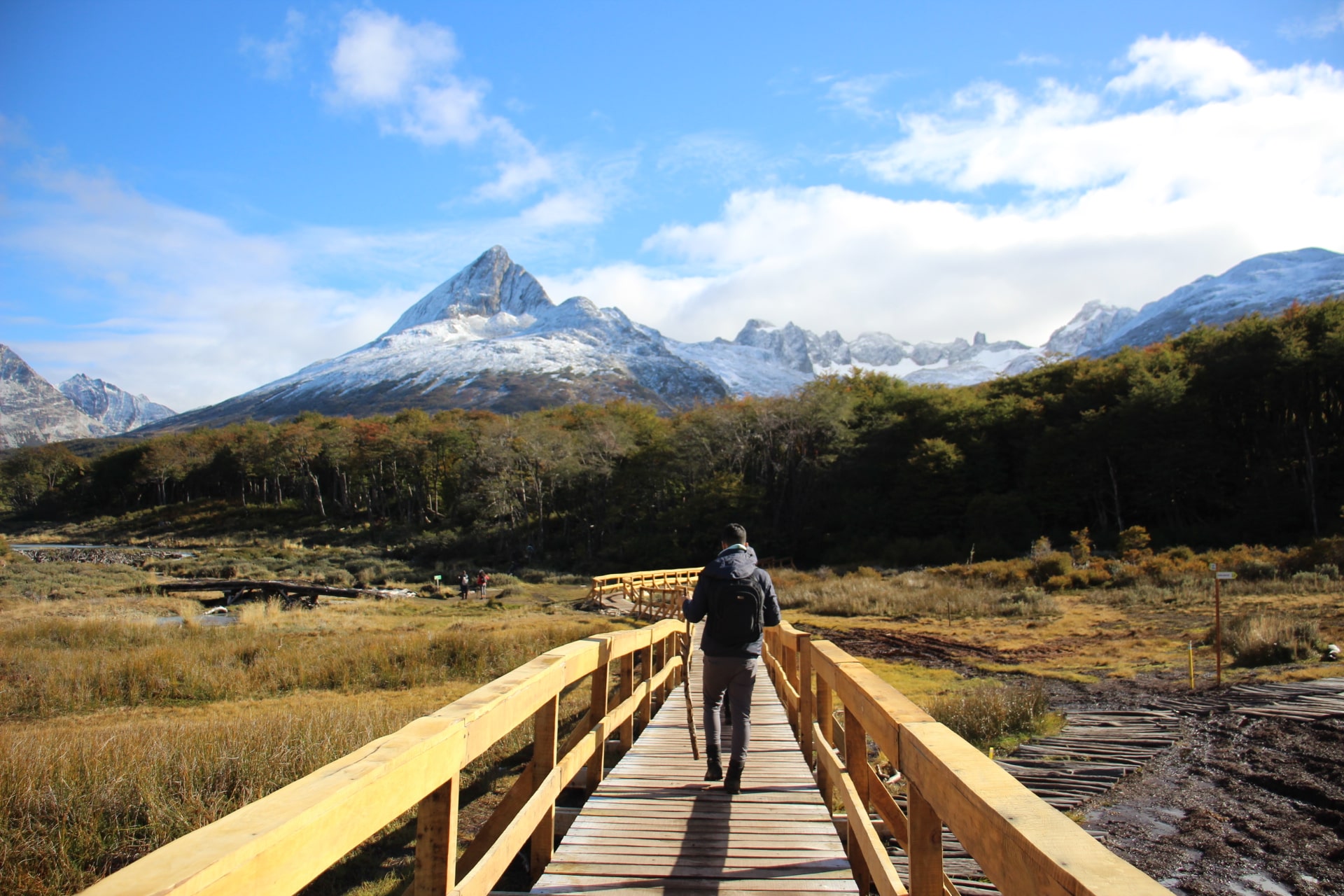
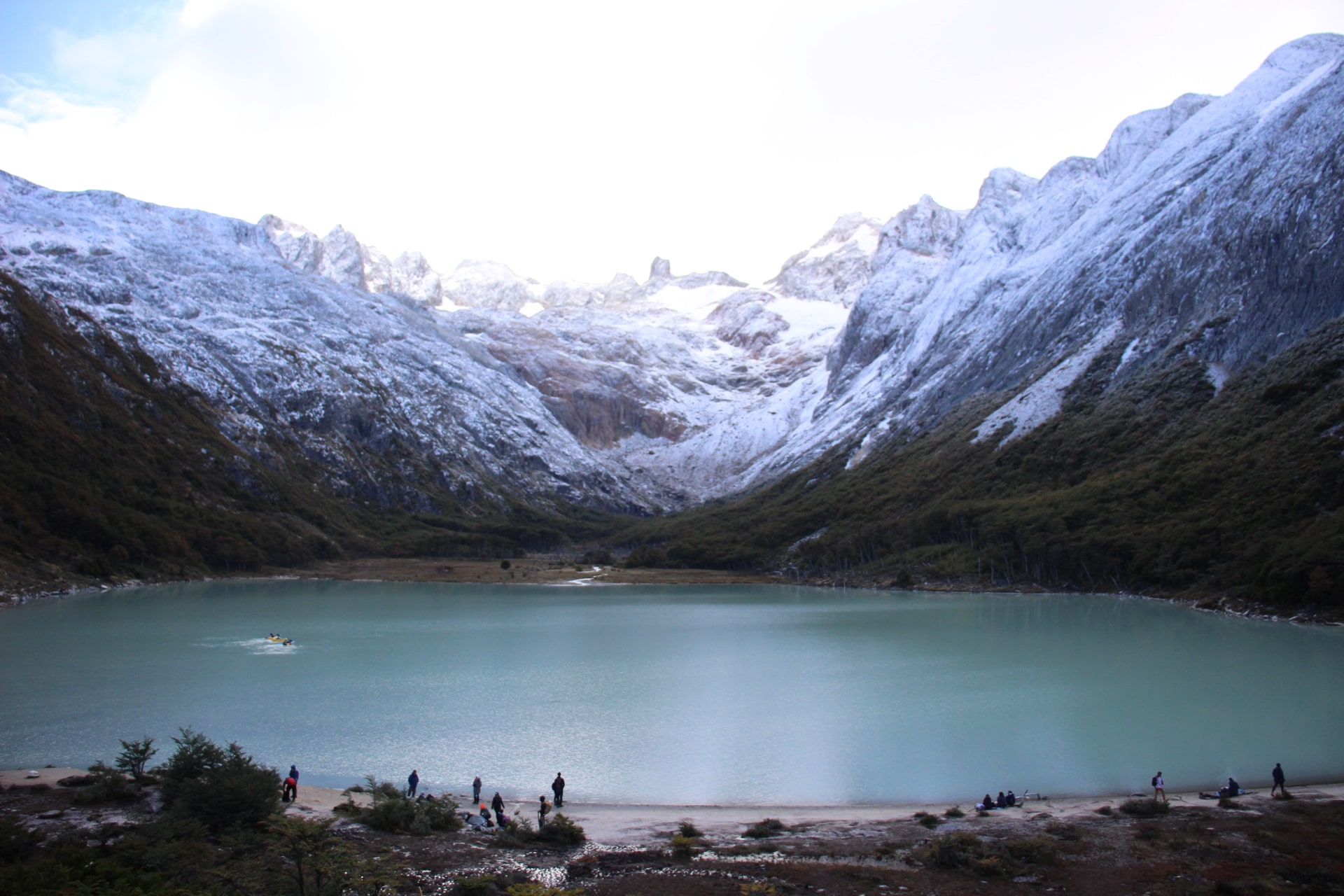
Ushuaia – Laguna Esmeralda
Shuttle ticket : 1,850 $ (8.60€) per person.
Duration: 15 minutes.
Day 12-13-14: Buenos Aires
We took the plane to get back to Buenos Aires which we got to explore during the last 2 days and a half. We visited some famous attractions such as La Recoleta cemetery, the Boca neighbourhood and the city centre with tours of the Palacio Barolo, the Cabildo Museum of Argentinian history and the cathedral. We also enjoyed an Argentinian wine tasting and a Tango evening before flying back home.
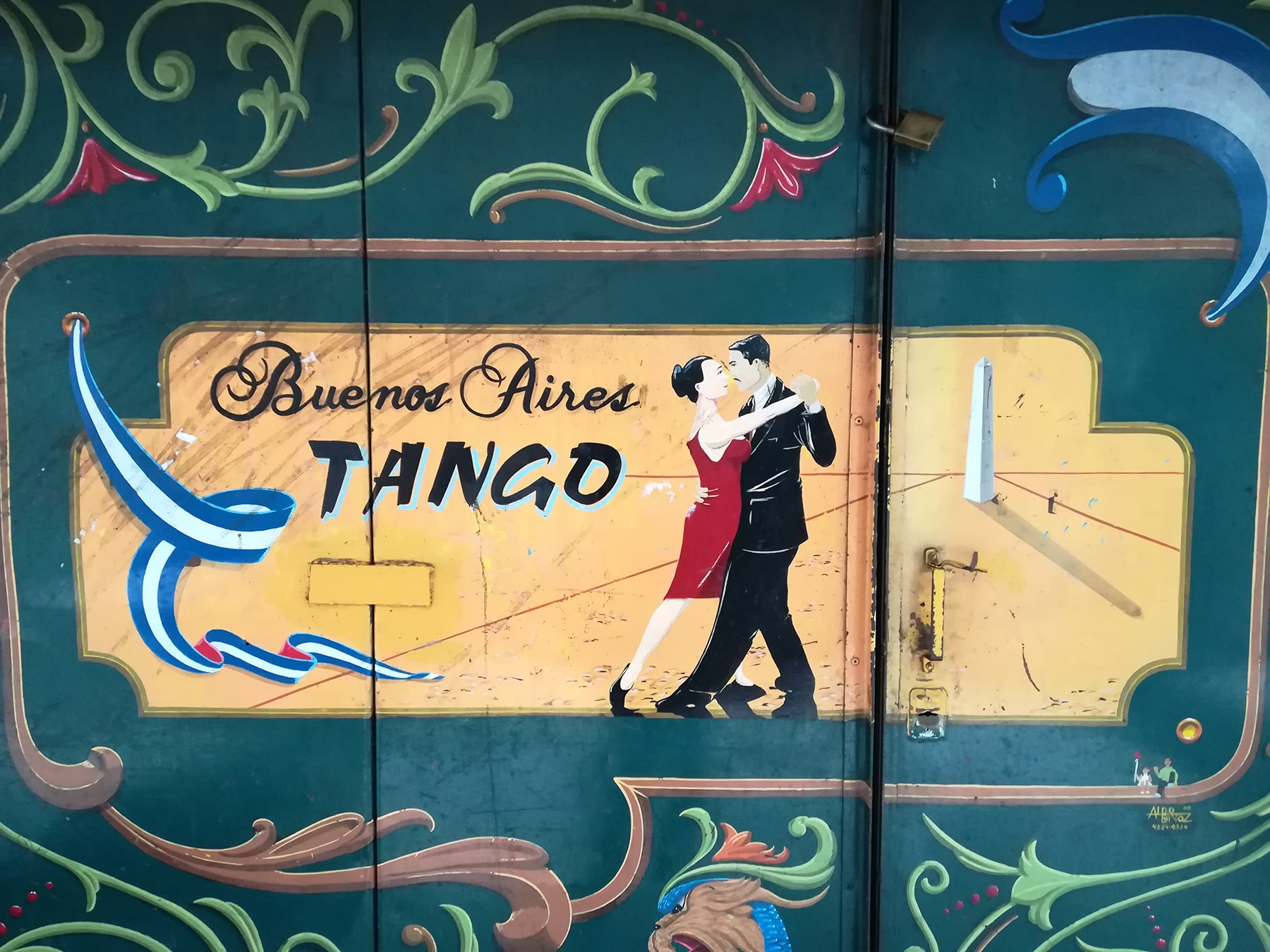

Palacio Barolo
Price ticket : 2,800$ (13€) per person.
Duration: Around 2 hours.
Cementerio de la Recoleta
Price ticket : free of charge.
Museo Cabildo
Price ticket : free of charge.
Duration: around one hour.
Transfer to the international Airport
Price: 6,000$ (27.90€).
Duration: around 40 minutes.
We got to the end of our two-week itinerary to Patagonia and Ushuaia. During this trip to Patagonia in march, we definitely clocked up the miles and filled our mind with images of huge landscapes and our lungs with clean air. Patagonia surely exceeded our very high expectations. Let us know if this Patagonia itinerary of two weeks inspired you and leave some questions if you need additional tips!
Tops and flops of Argentina
| Top Argentina | Flop Argentina |
|---|---|
| Breathtaking views | The money change situation is difficult to handle, especially at the beginning of the trip. |
| Very lovely people | It is difficult to withdraw money in small touristic cities, where cash runs out quickly. |
| Touristic areas are well organised and safe |
